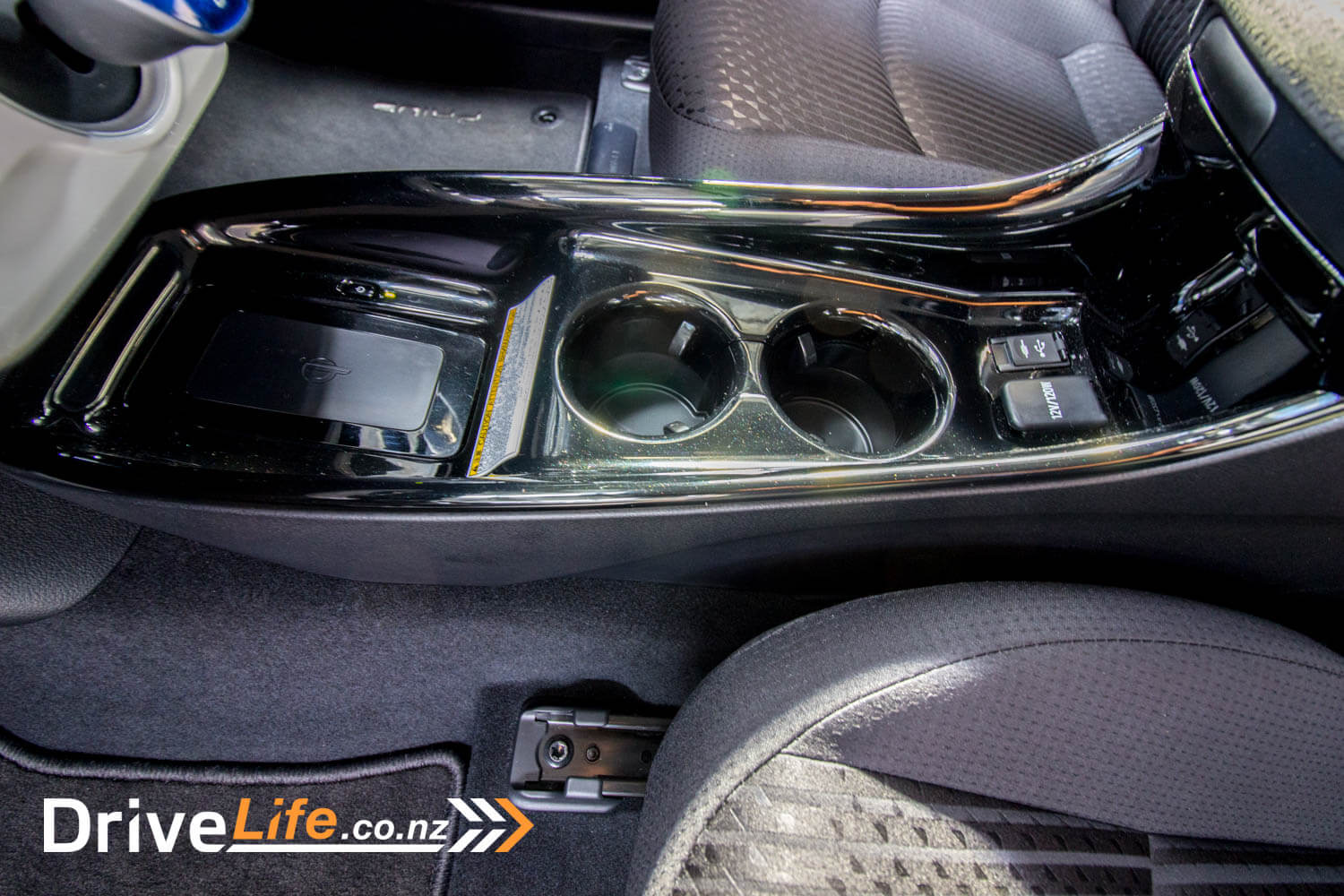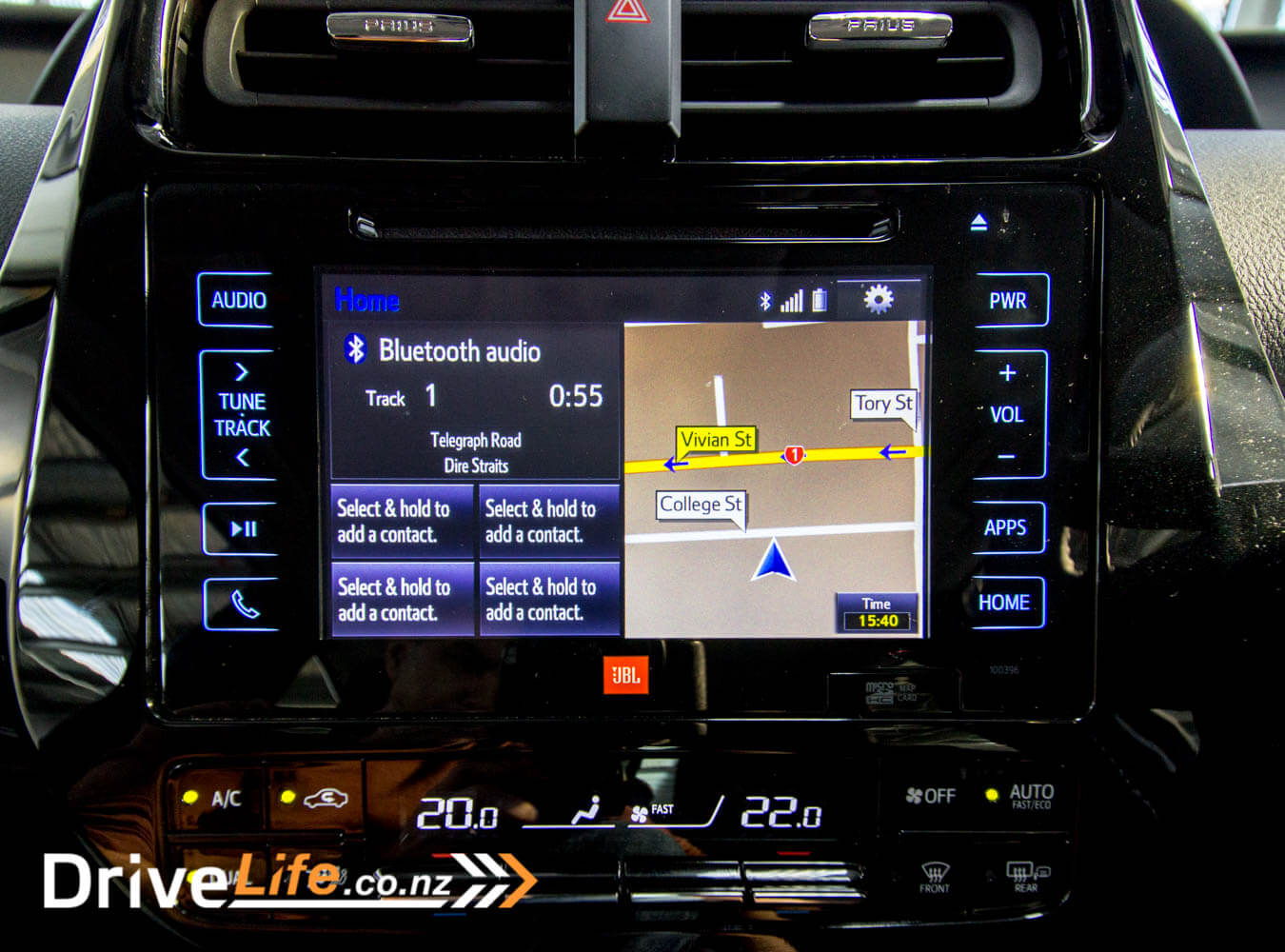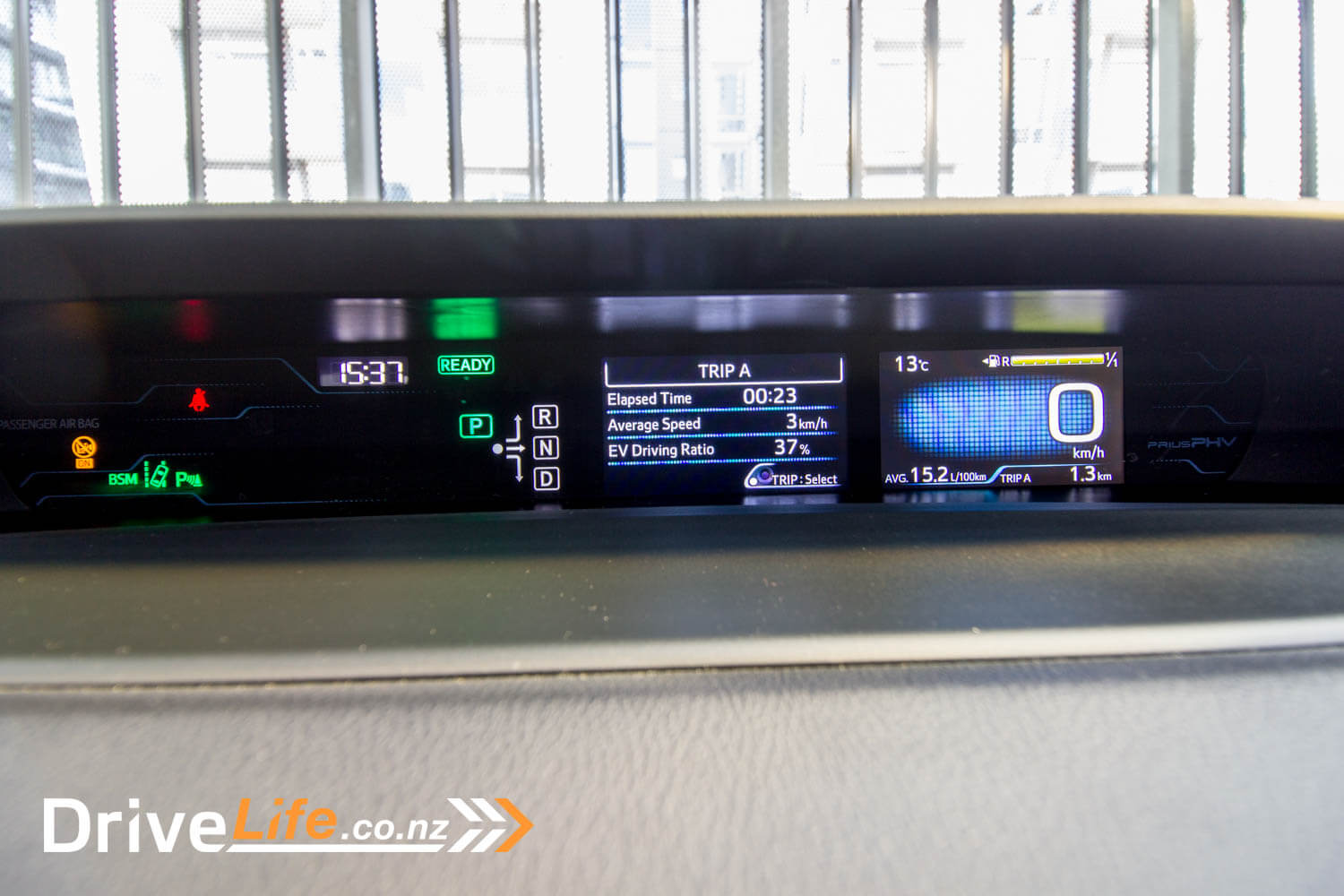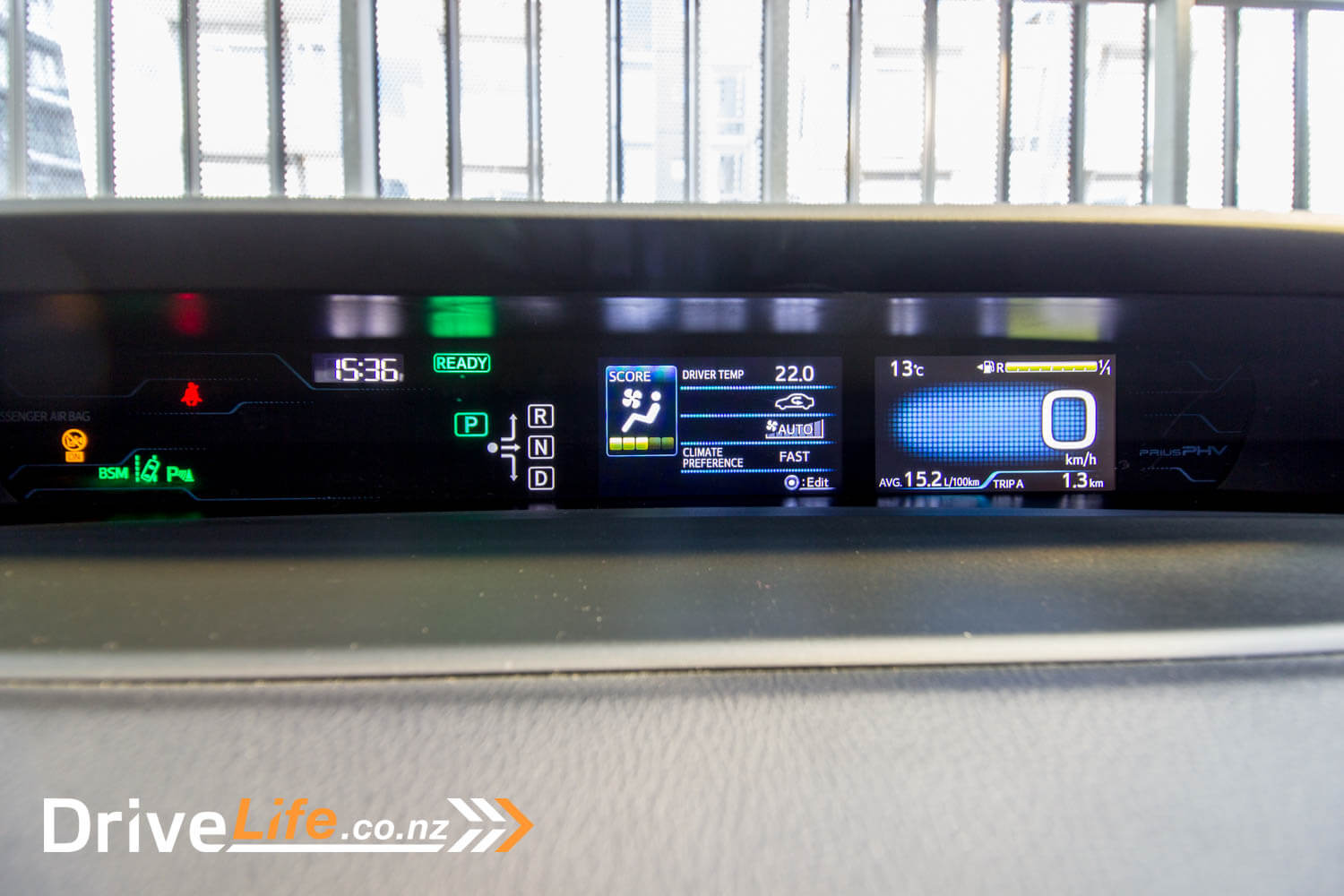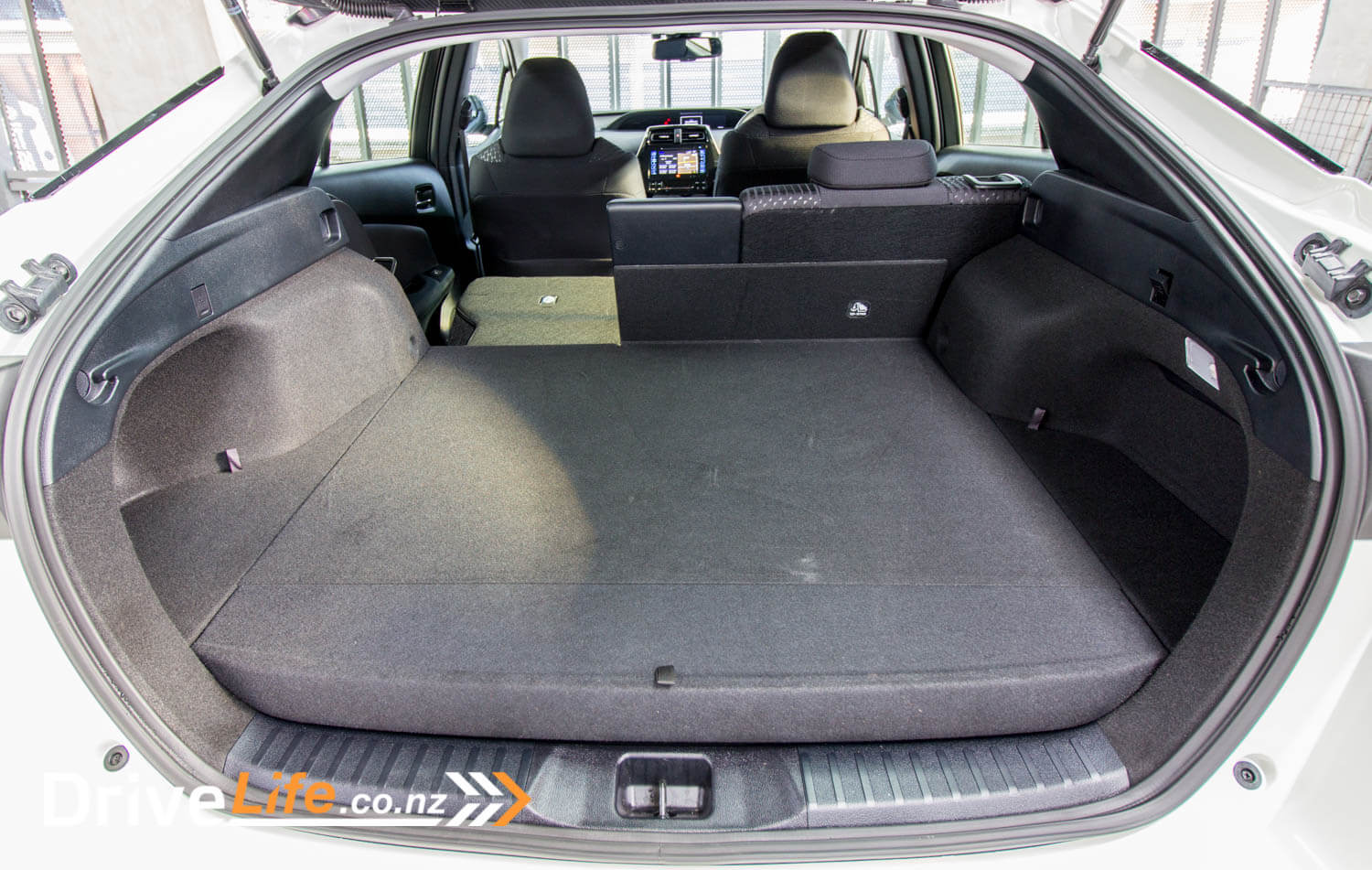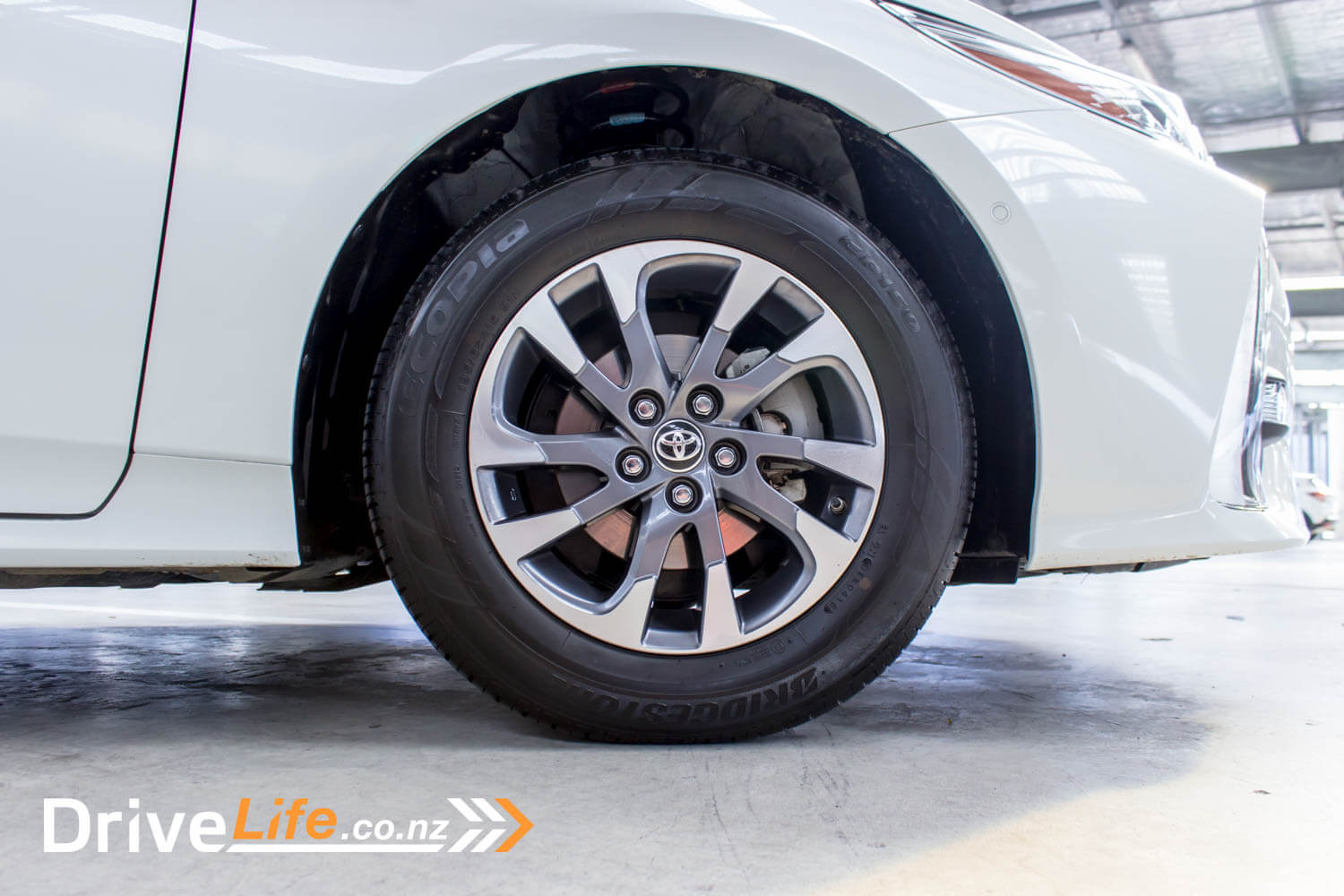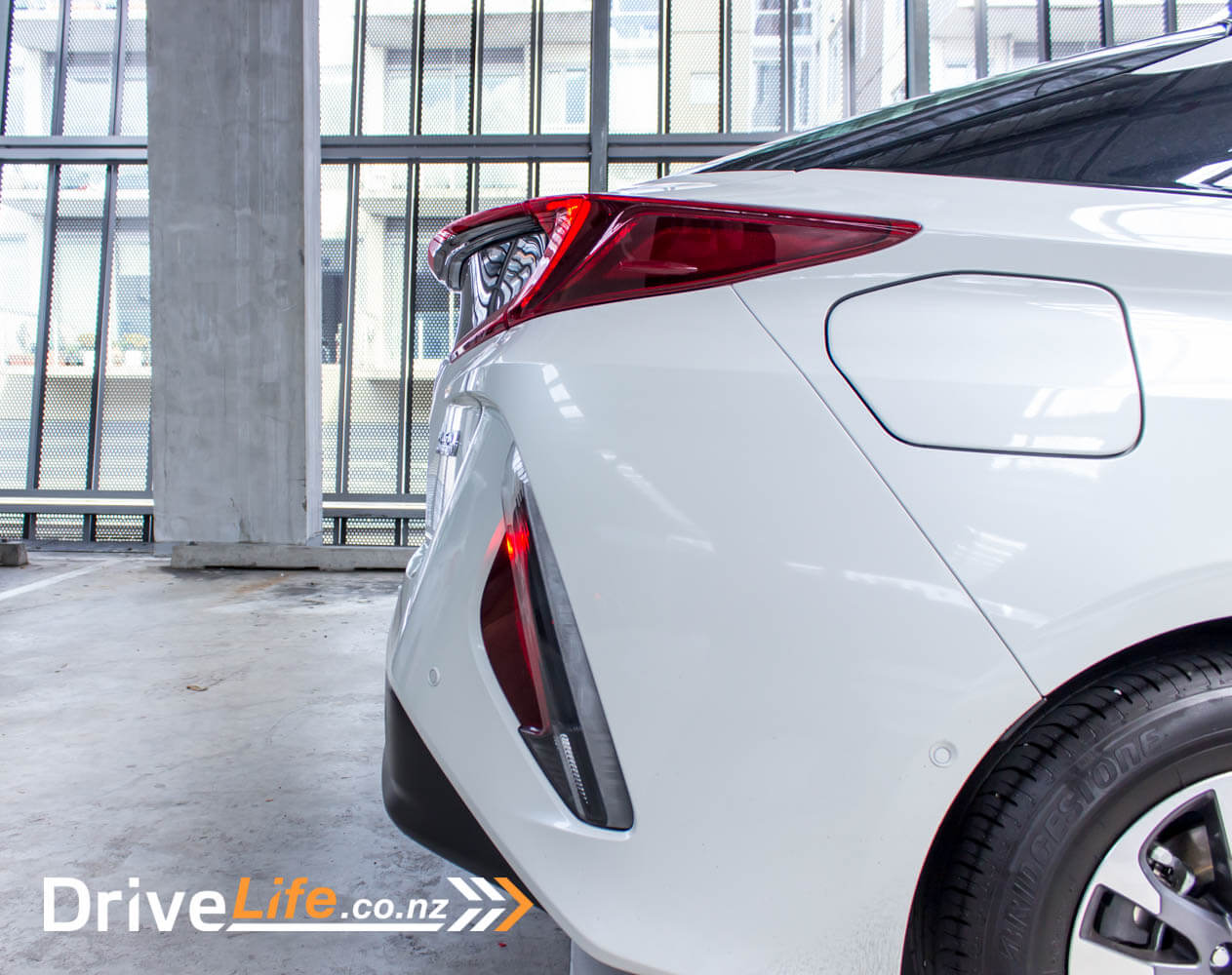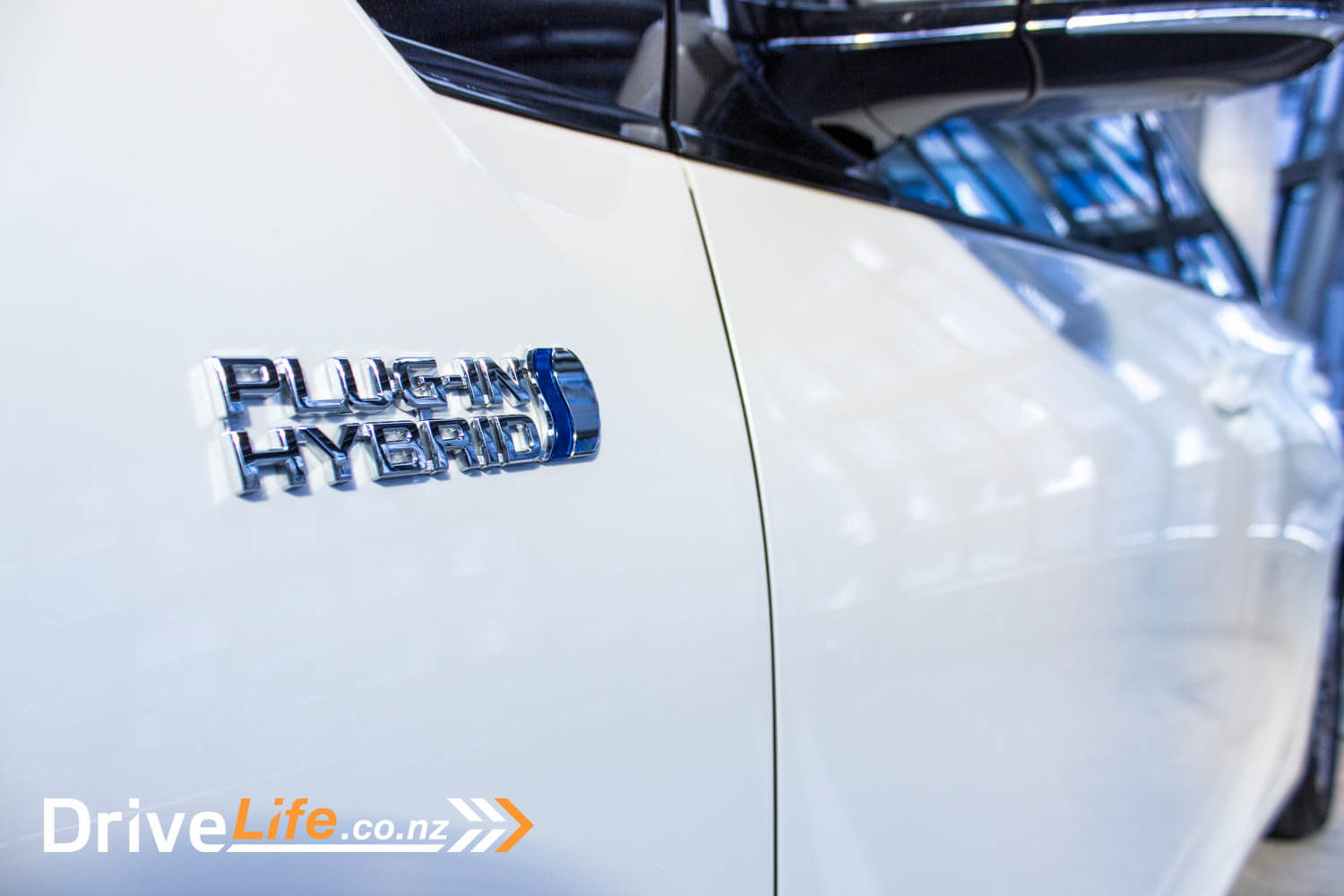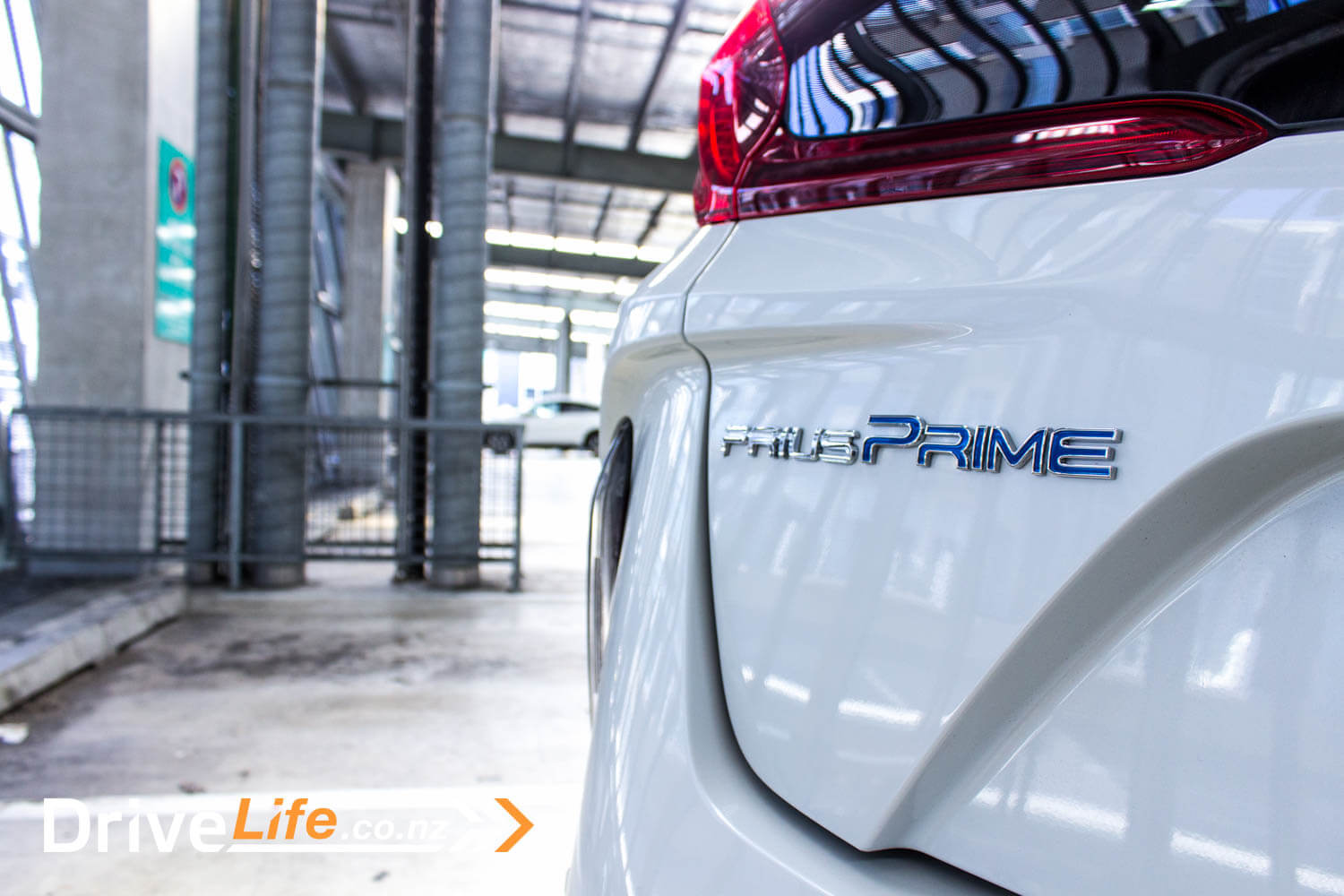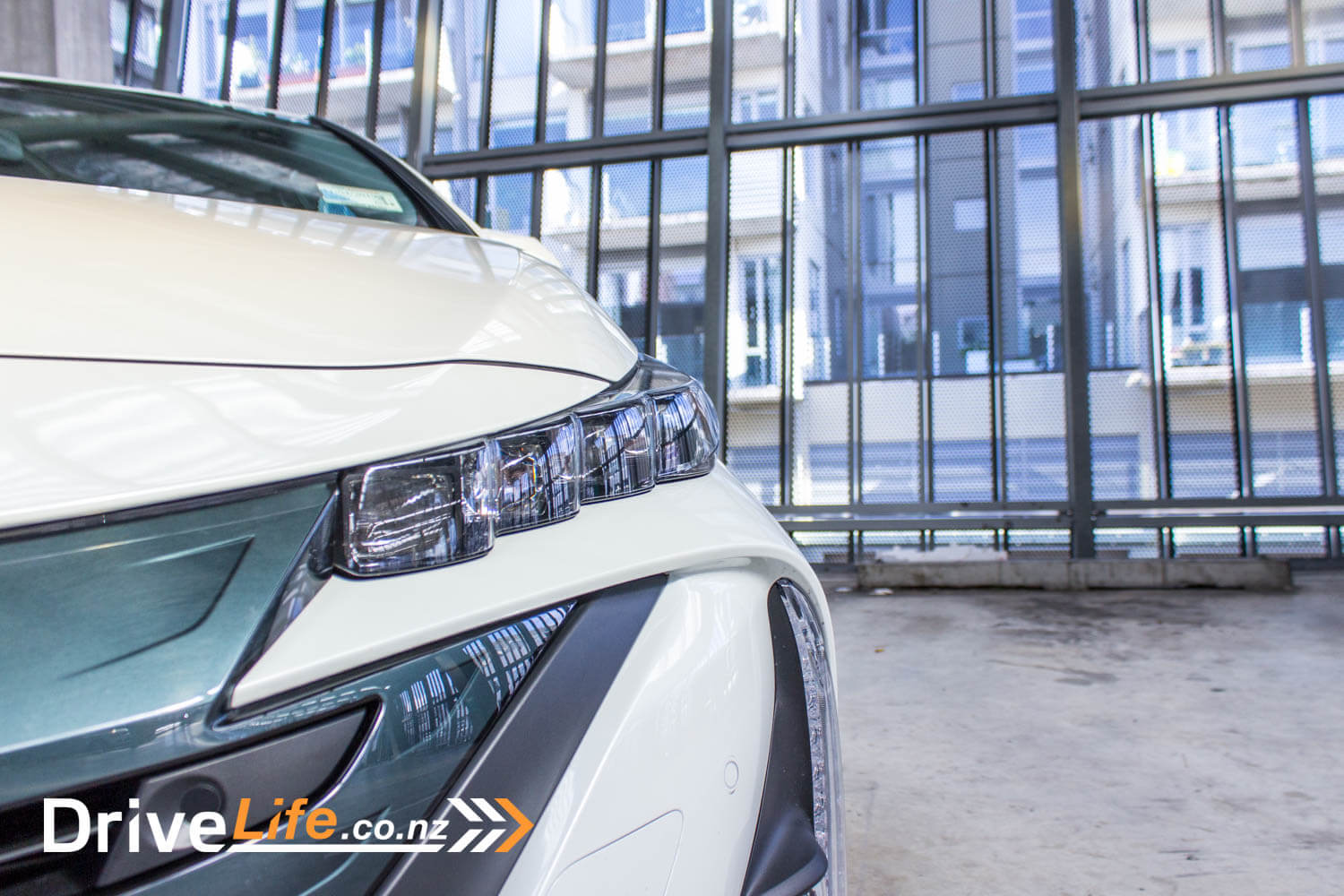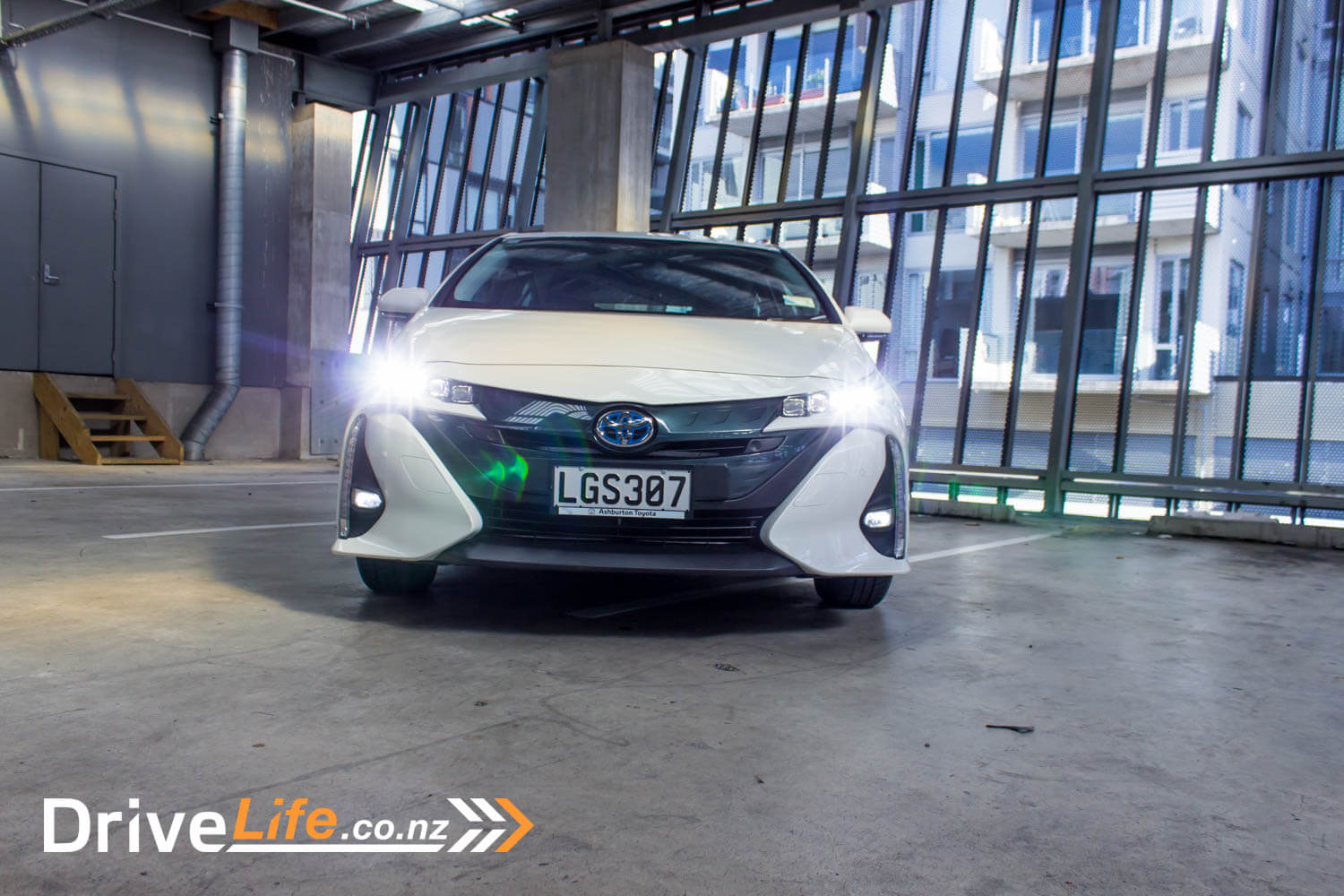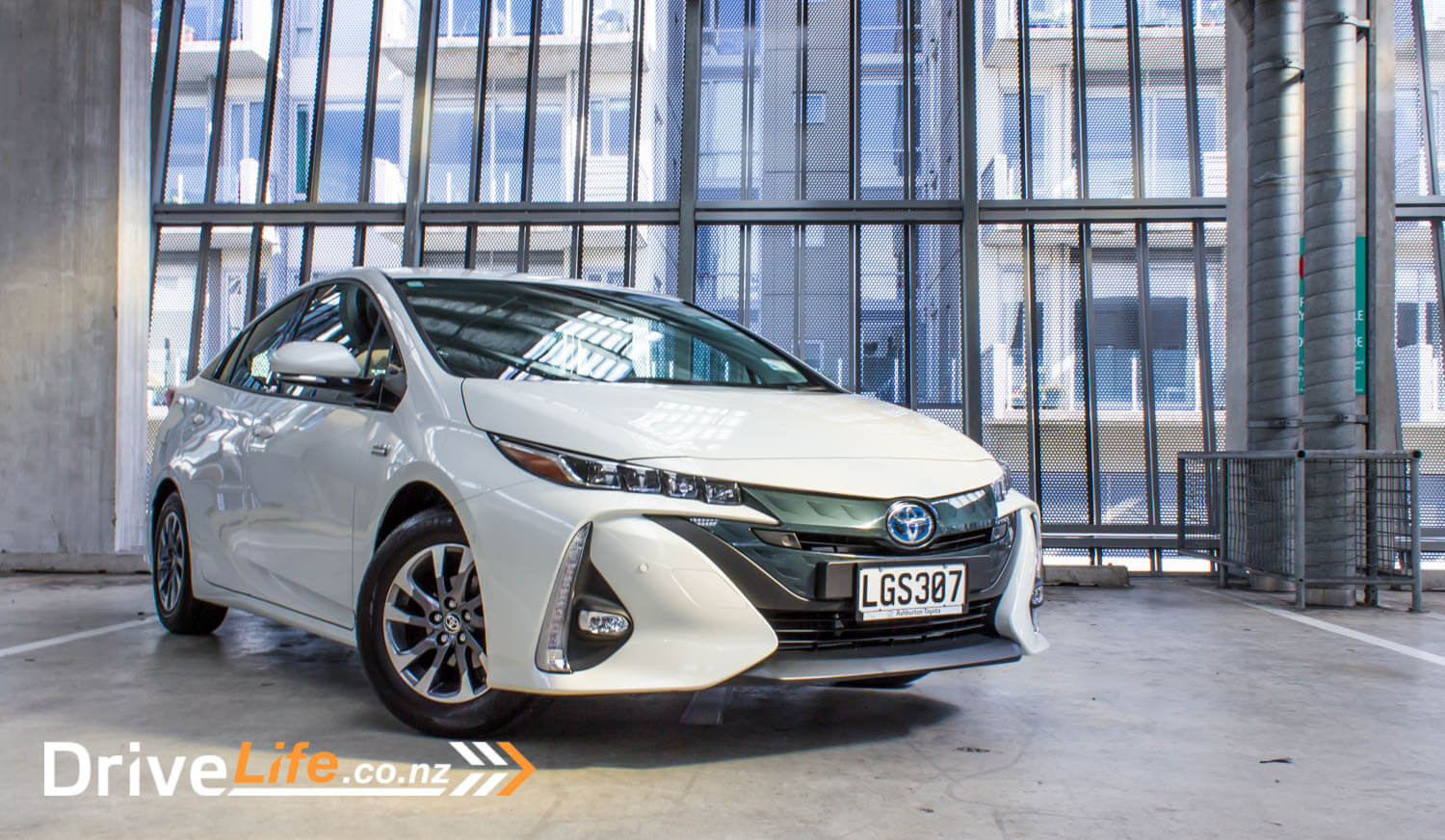What happens when you take a successful hybrid car, and then add in some EV capability? The Toyota Prius Prime is born.
Out of the gate, let’s be upfront with Toyota’s fuel consumption claim for the Prius Prime: 1.0L/100km. Yep, you read it right, a combined rating of 1.0. That’s pretty low in any sort of terms, unless you are driving a full EV.
At the recent Toyota Corolla launch, Neeraj Lala, General Manager of Product and New Vehicle Sales for Toyota New Zealand, told me his wife has achieved 2,400km out of a tank of petrol in her Prius Prime. This had me salivating, and I was determined to try to get that sort of mileage out of our test car.
Not only that, but there were claims from a certain Toyota dealer that some Primes had the fuel going off, as it wasn’t being used. True story.
With 1.0L/100km in my sights, I spent a week with the Prime to see if I could get to this magical figure.
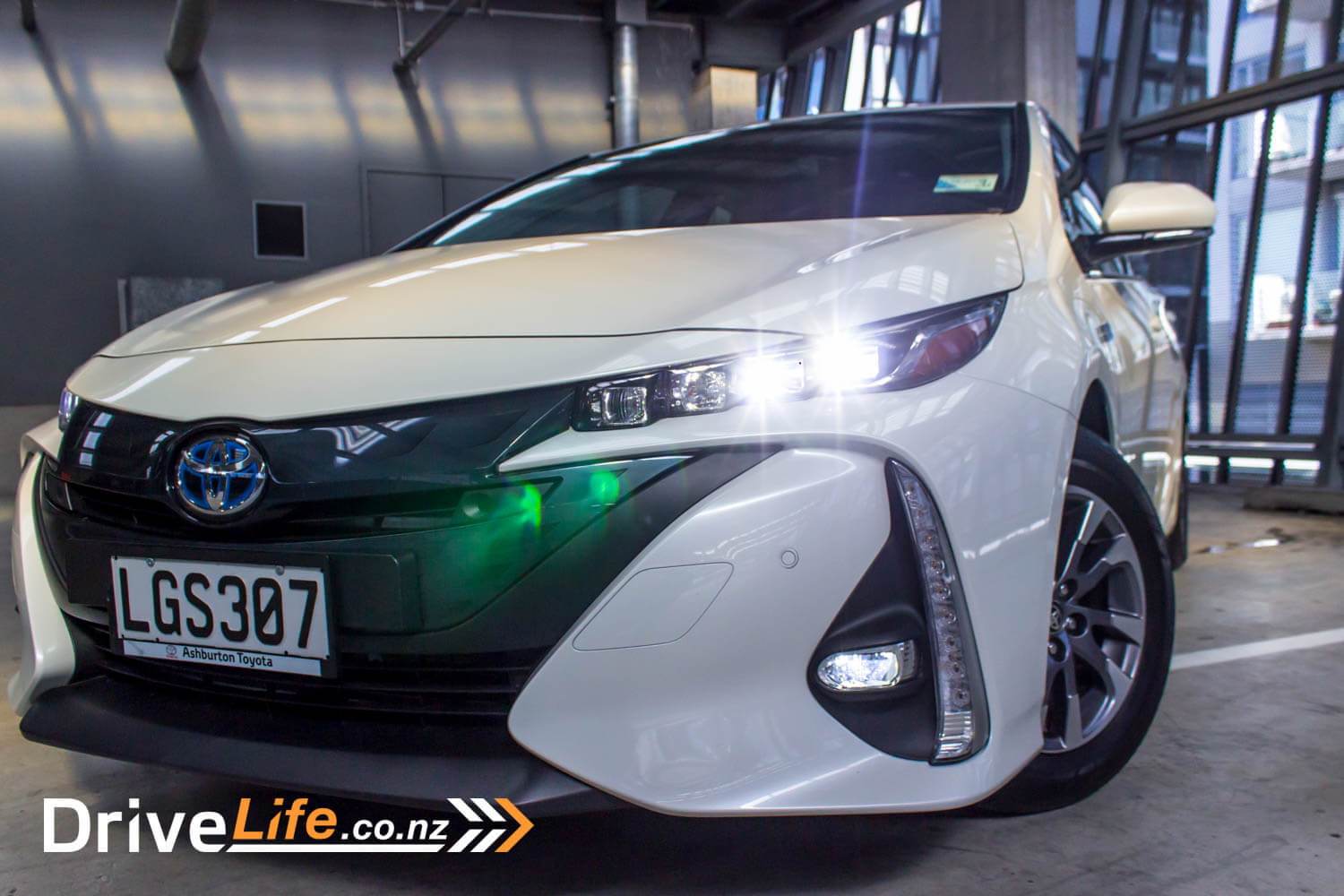
What’s In The 2018 Toyota Prius Prime Range?
Get your fingers out and get ready to count – you’ll only need one. Well, two if you count the leather seat option.
At $48,490 the Prius Prime is good value. It’s not hugely kitted out, but it does have the vital things I like to see in a car, like adaptive cruise control, a heads-up display (HUD), blind spot monitoring, front seat heaters and Qi wireless charging.
There are other features too, like Lane Departure Warning, Vehicle Sway Warning, Steering Assist Function, auto headlights and wipers, auto high beams, Lane Sway Warning, rear cross traffic alert, hill start assist, road sign assist, auto-dimming rear-view mirror, a speed limiter, a 7” central display, automatic parking (parallel or angle), front and rear sensors, keyless entry and start, climate AC, a 10-speaker JBL audio system, SatNav with SUNA traffic alerts, LED projector headlamps, LED turn signals, LED clearance lamps, LED DRLs, front LED fog lights, LED taillights, LED indicators, auto folding and heated exterior mirrors, and power driver’s lumbar adjust.
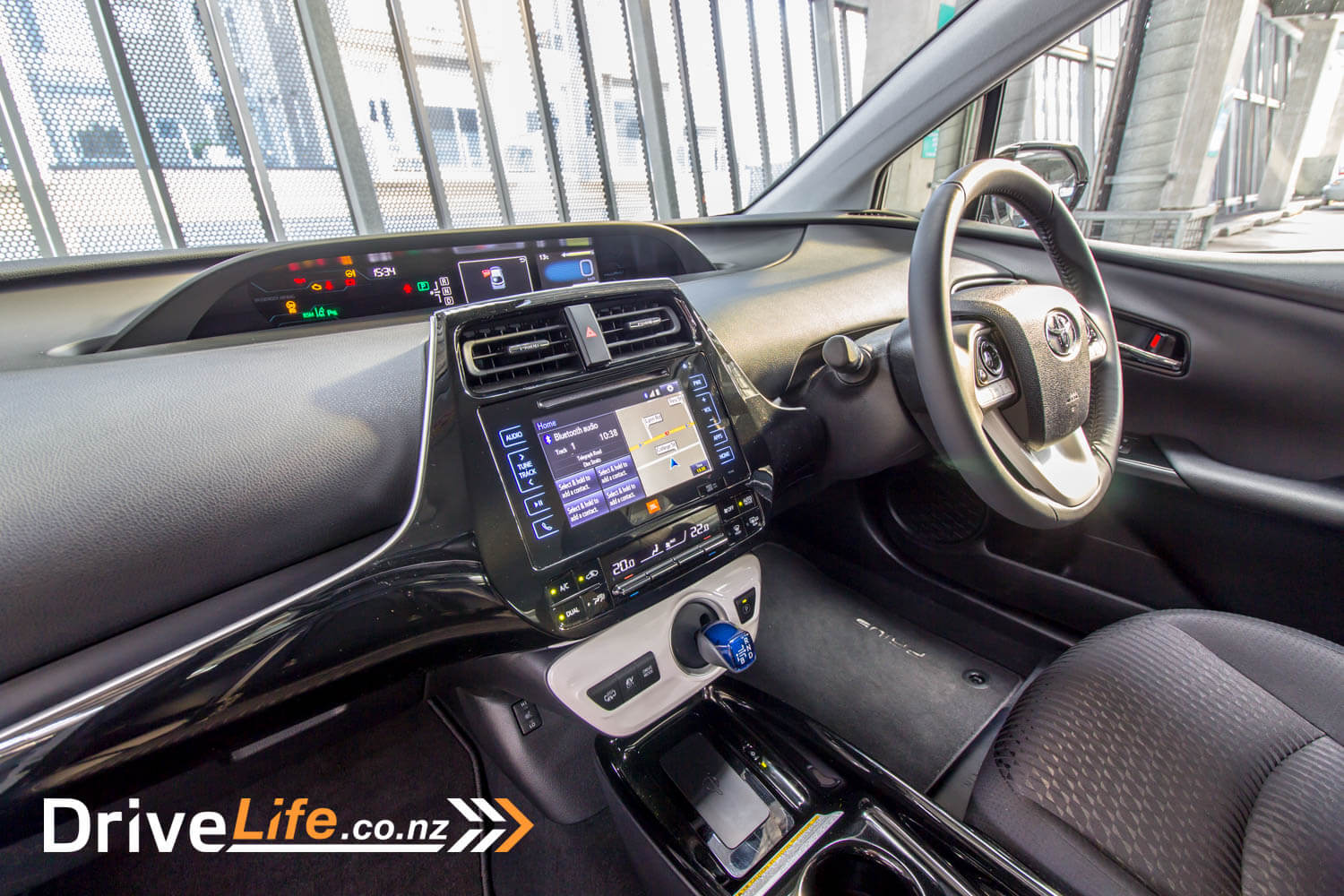
For the money and the hybrid/EV system, that’s pretty sharp pricing, and you can pay $1,500 more for the leather seat option – that’s the only difference. If you compare to the normal Prius, it’s actually very close in specs to the Prius ZR except for leather seats and a power driver’s seat – and the Prius ZR is priced at $46,490.
So at just $2K more, you’d be crazy not to go to the Prime – unless you needed 5 seats and a bigger boot.
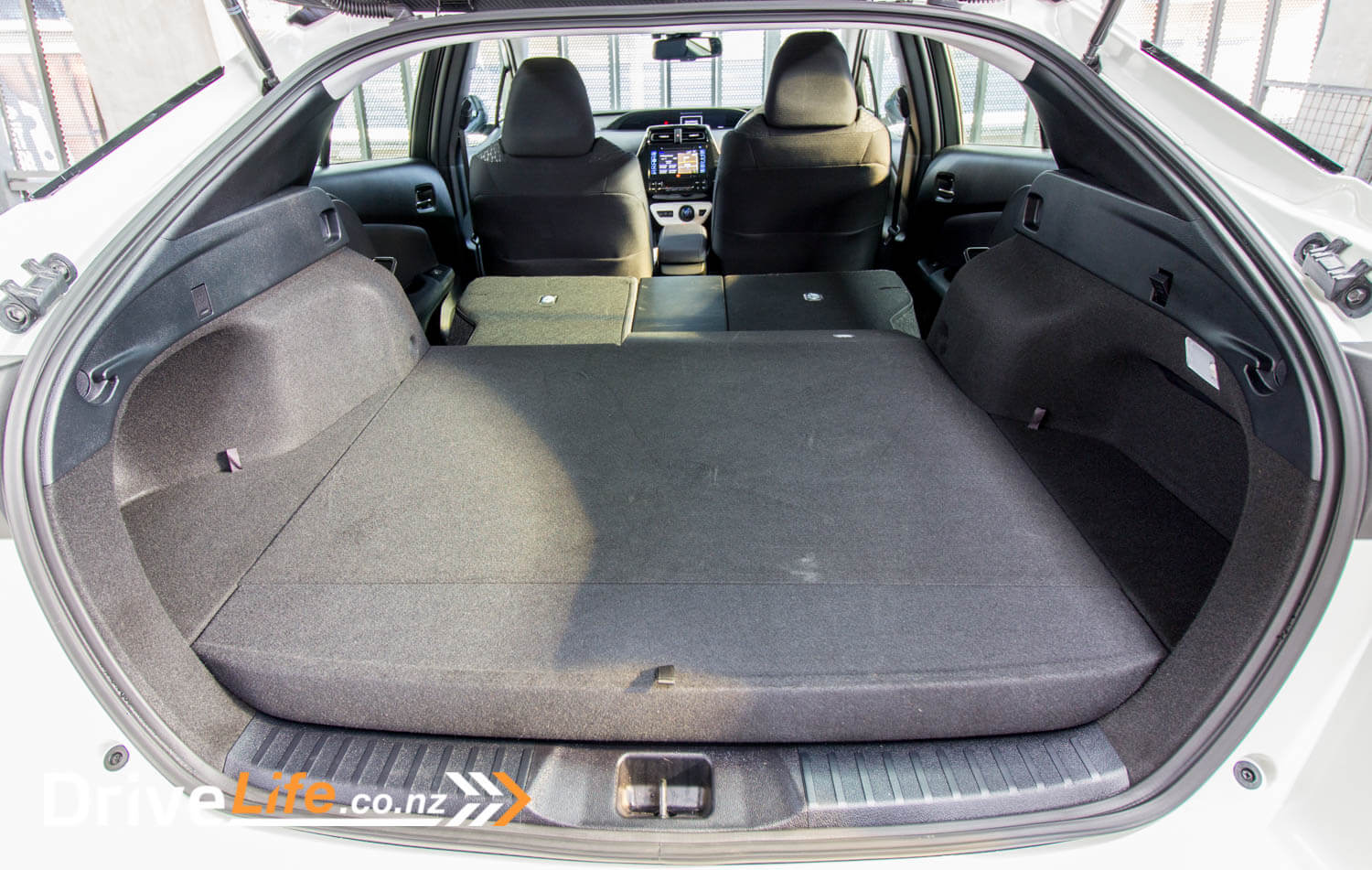
First Impressions Of The 2018 Toyota Prius Prime
At first, I wasn’t keen on the look of the front of the Prime, but it grew on me. The four-headlight treatment is different, and actually quite cool.
But it can look busy at the front with lots of angles and that big, wide grille. I have to say, the Prime turned heads while I was driving it. This felt weird in a Toyota – it’s something you’d expect to happen in a BMW M5 – but a Prius? Really?
And yes, it really happened – people looked.
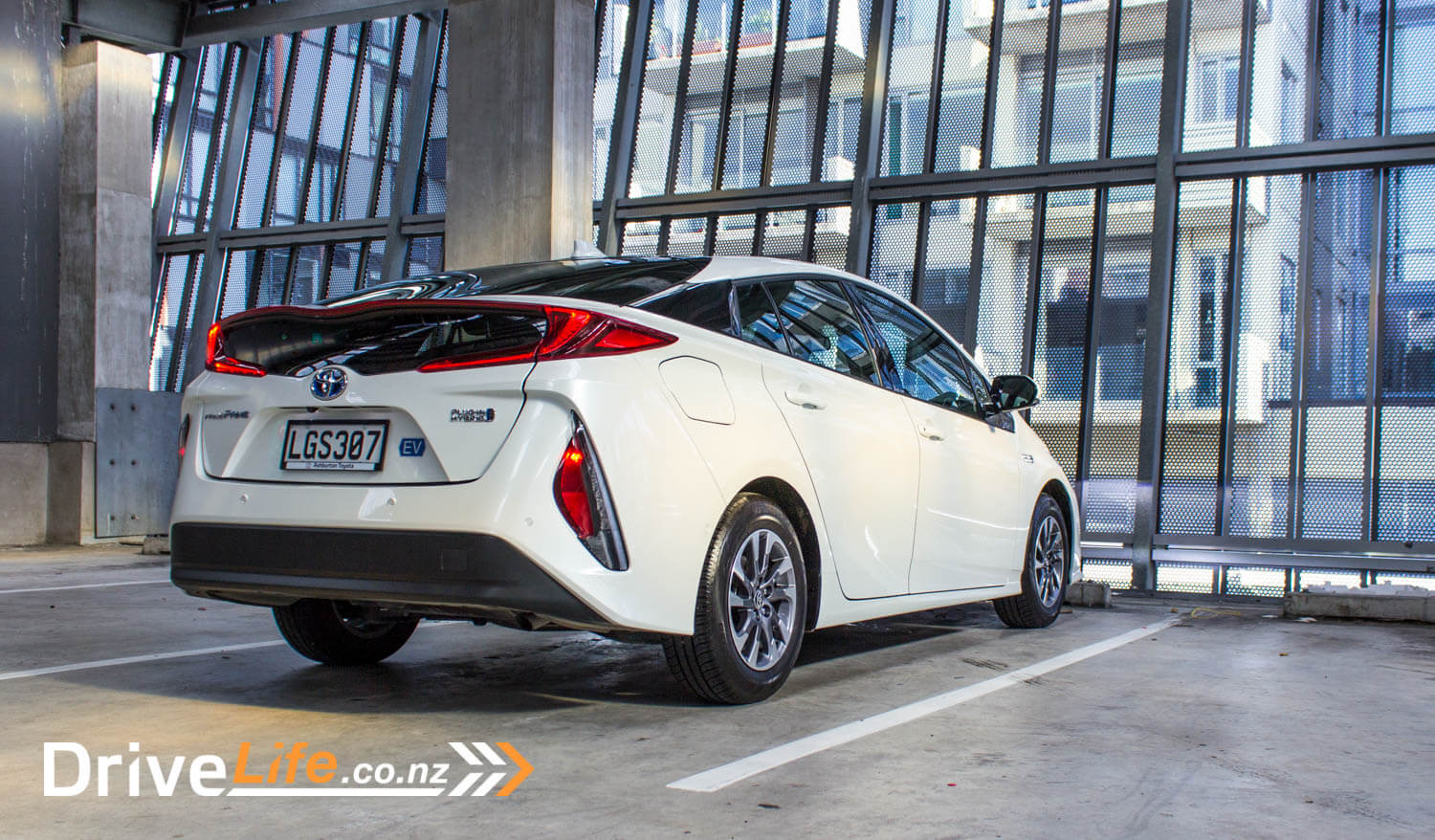
The sides of the car are pretty inoffensive, and the sloping rear end with the floating roof looks particularly good. Opinions were divided on the split rear window. Driving it instantly reminded me of the Mitsubishi Eclipse. It looks good on the Prime too, and I love the taillight treatment almost completely circular around the split.
That rear window is actually a ‘double bubble’ rear windscreen – it curves down in the middle for less wind resistance.
The whole rear of the car looks less boat-like in my opinion, compared to the previous design of Prius.
One quick comment on the rear doors – they look very cool with that sweeping downwards design, but it does make it a little claustrophobic in the rear seats.
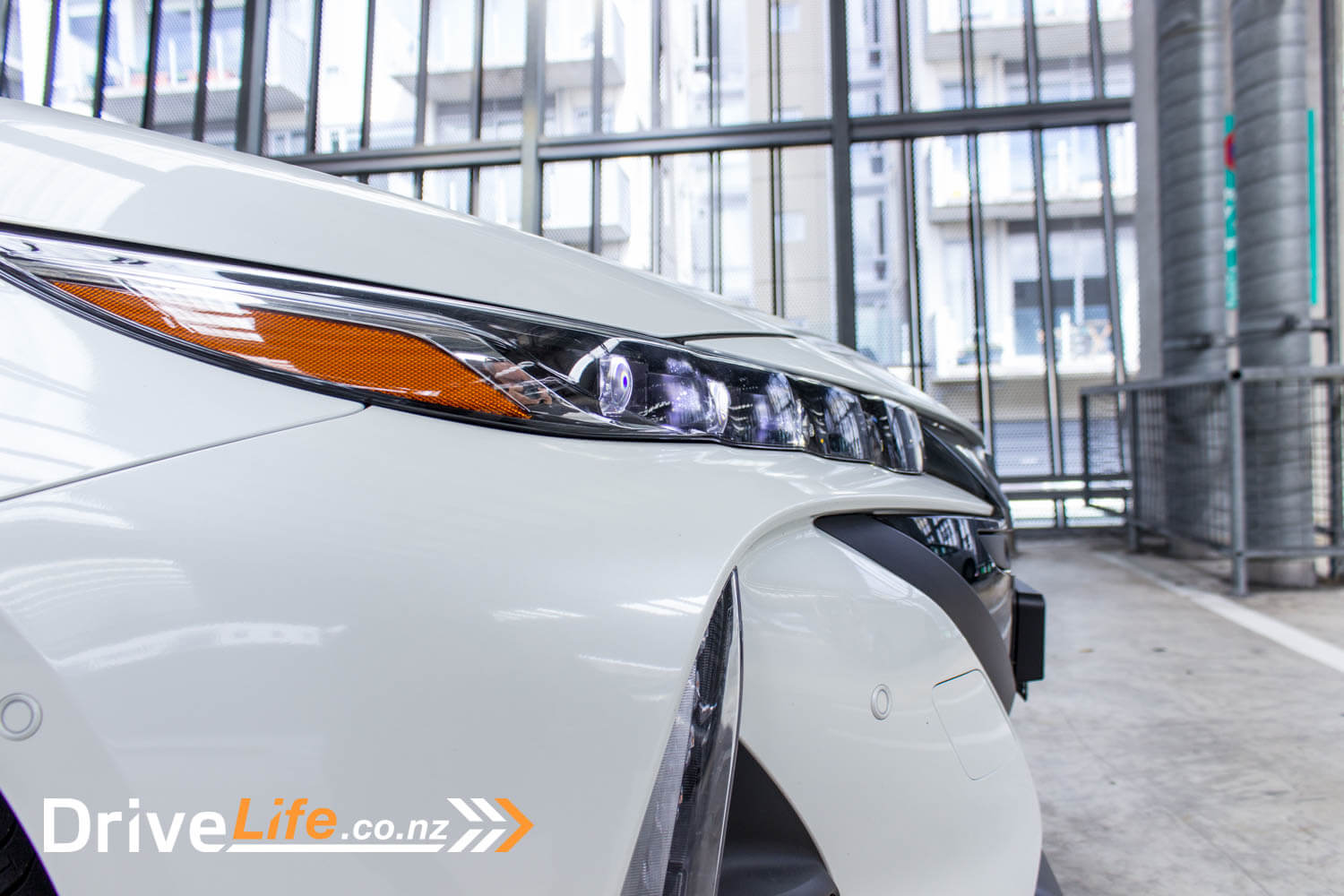
What’s The Interior Like On A 2018 Toyota Prius Prime?
Then you open the driver’s door and see the white lower steering wheel cover. That, along with the white lower centre console was a bit much for me. The rest of the cabin is pretty pleasant, there’s grey headlining and black cloth seats, as well as the 7” centre touchscreen display standing proud.
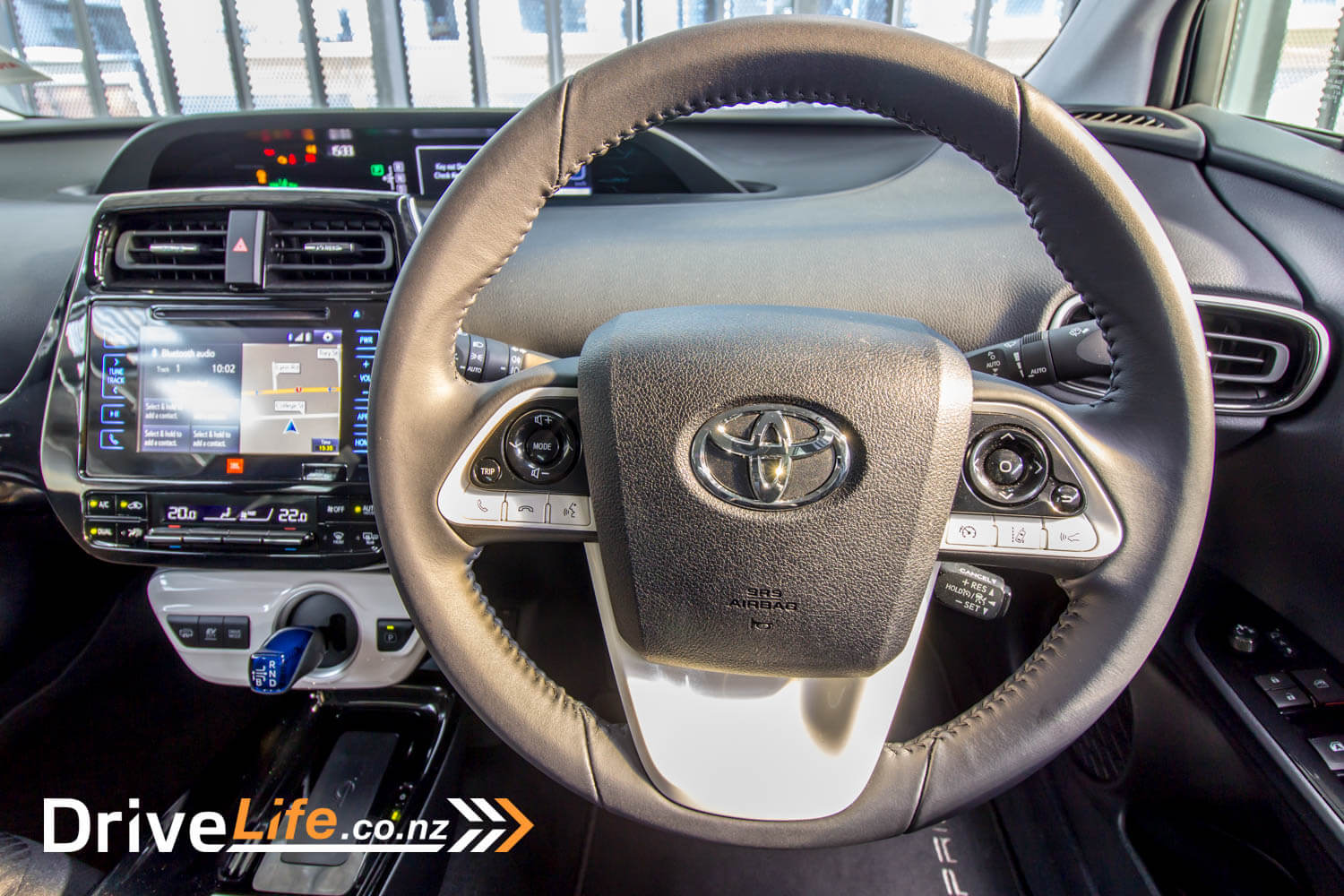
It’s almost a shame Toyota have stuck with the same design of gear selector in the Prime – for new drivers to the car, it’s confusing. There’s still the D, P, N and R modes, but you also have B mode and the operation of it can be a little clumsy – sometimes I thought I’d selected D but I hadn’t selected any gear at all. I say this to compare it to the VW e-Golf I had the other week – it had an absolutely normal-looking gear selector, complete with nice mechanical indents between the gears. I’m all for techy stuff, but this selector needs refining, or at least some usability testing.
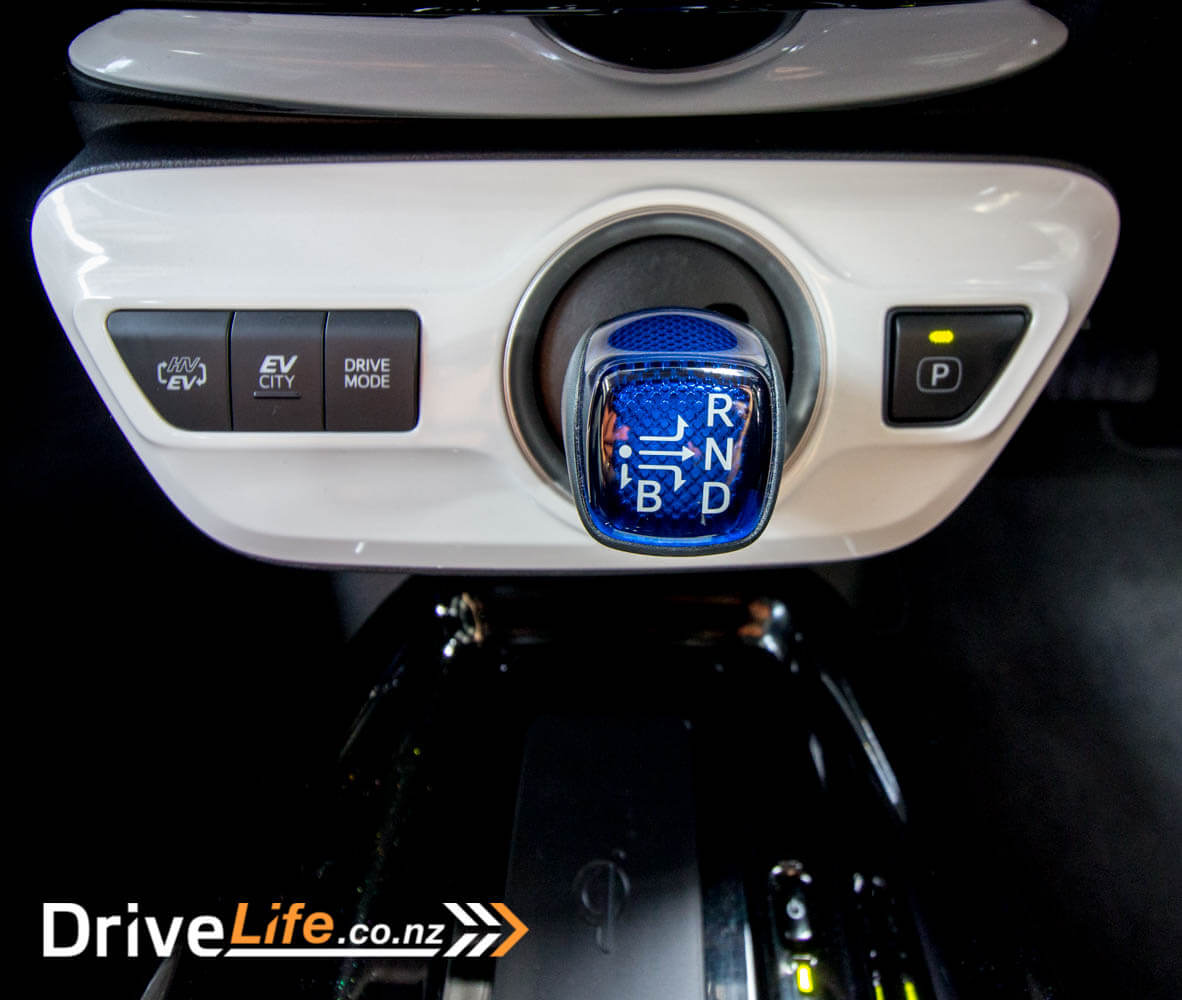
There’s the normal Prius design of a central dashboard, so nothing to interrupt the driver’s view – great. Even better is the HUD – I wish all cars had a heads-up display, they are the best.
A glance around the back seat will give you a bit of a shock – the Prius Prime is a four-seater. In the middle of the car is a fixed console with two cup holders and some storage under a cover. I’m not sure how much this will impact buyers, if at all, but it’s sure something to be aware of. Uber drivers will not be buying the Prime, I expect.
Rear legroom is great, and apparently the seats back there are pretty comfy. The fronts too are great, with just the right amount of support in the right places.

Back in front, great to see that Qi wireless phone charging is standard, good on Toyota for doing this. Weirdly there’s just one USB in the front, along with an AUX port, and the back-seat passengers get a 12-volt socket but zero USB ports. I would have thought with the target market of the car that there’d be more USBs.
A welcome surprise in the front was the CD slot for the JBL audio system – I wasn’t expecting to see that there.
Lifting up the non-electric tailgate, and you see where the batteries in the Prime have been placed – on top of whatever was in the boot before. This does mean storage space is cut down quite a bit, and if you are using the parcel tray cover (I always have it on for security) then the gap is quite narrow, around 250mm.
Total load space with the rear seat up is just 360 litres, compared to the normal Prius at 502 litres. There are a couple of small storage pockets under the floor on the left and right of the car as well, and there is space under the floor to store the parcel tray cover when you aren’t using it.
Then again, the Prius Prime is really meant to be a town car, so hopefully this isn’t too much of an issue for owners.
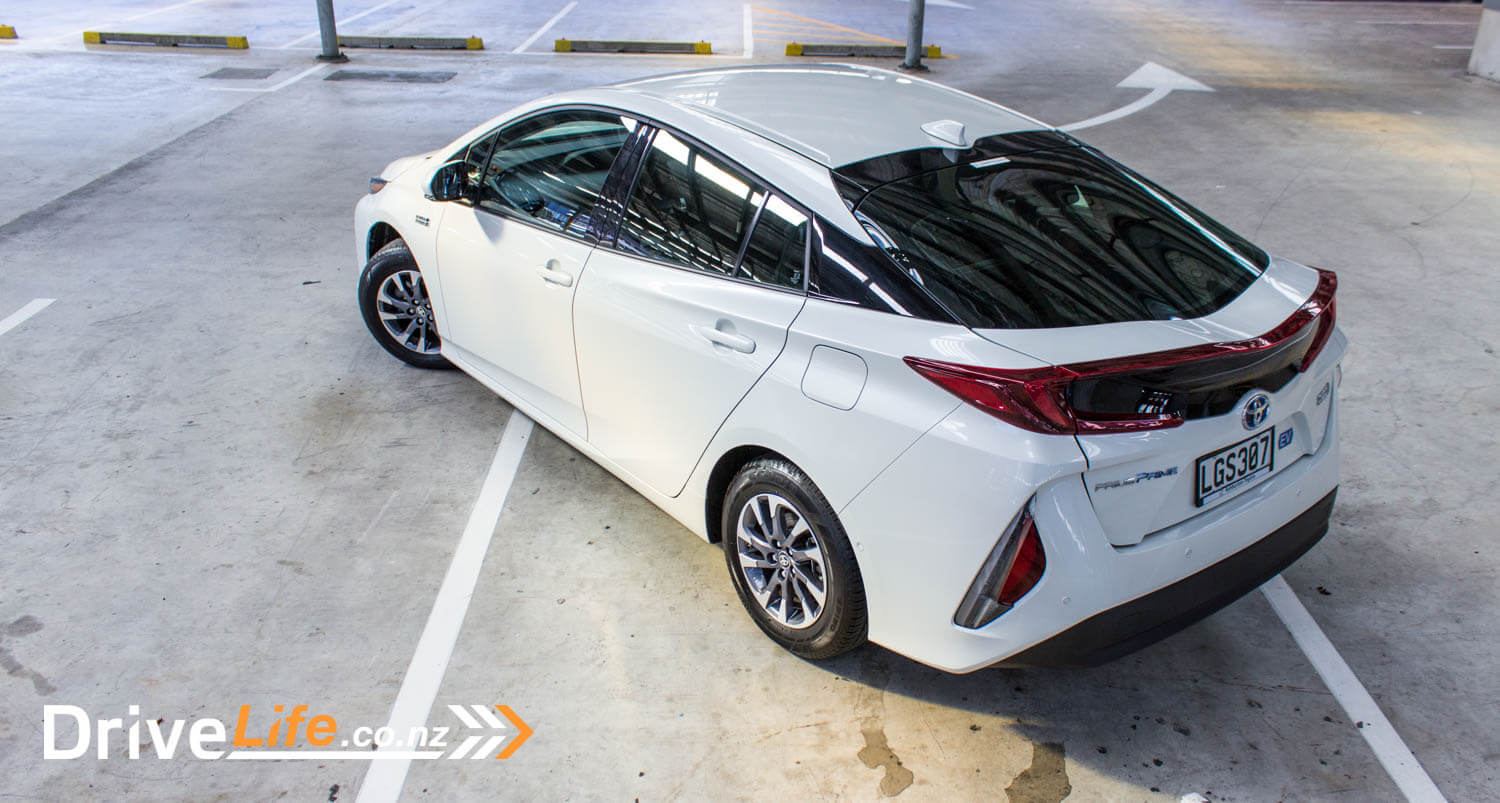
What Does The 2018 Toyota Prius Prime Drive Like?
Before delving into just how much or how little petrol the Prius Prime uses, let’s talk about day-to-day stuff. A new feature here is Driver Priority air conditioning. There’s a button on the centre console that forces the air con to only focus on the driver, so if it’s just you in the car, you save power. Got to be a good thing.
I expect some people are going to find their first surprise when they go to indicate – they’re on the ‘wrong’ side of the steering wheel. Did I keep hitting the wiper stalk? Totally. I’m sure I’d get used to it in time, but it felt so wrong in a Toyota. Apparently we get the European version of the Prime, so there you go.
Pulling up at the lights for a long time, I went for the park brake – there isn’t one. If you are going to be a while, you’ll need to press the P button to put the car in Park, then move the lever down to D when you want to move off. Not the end of the world, but an electric park brake with auto hold would have been handy.
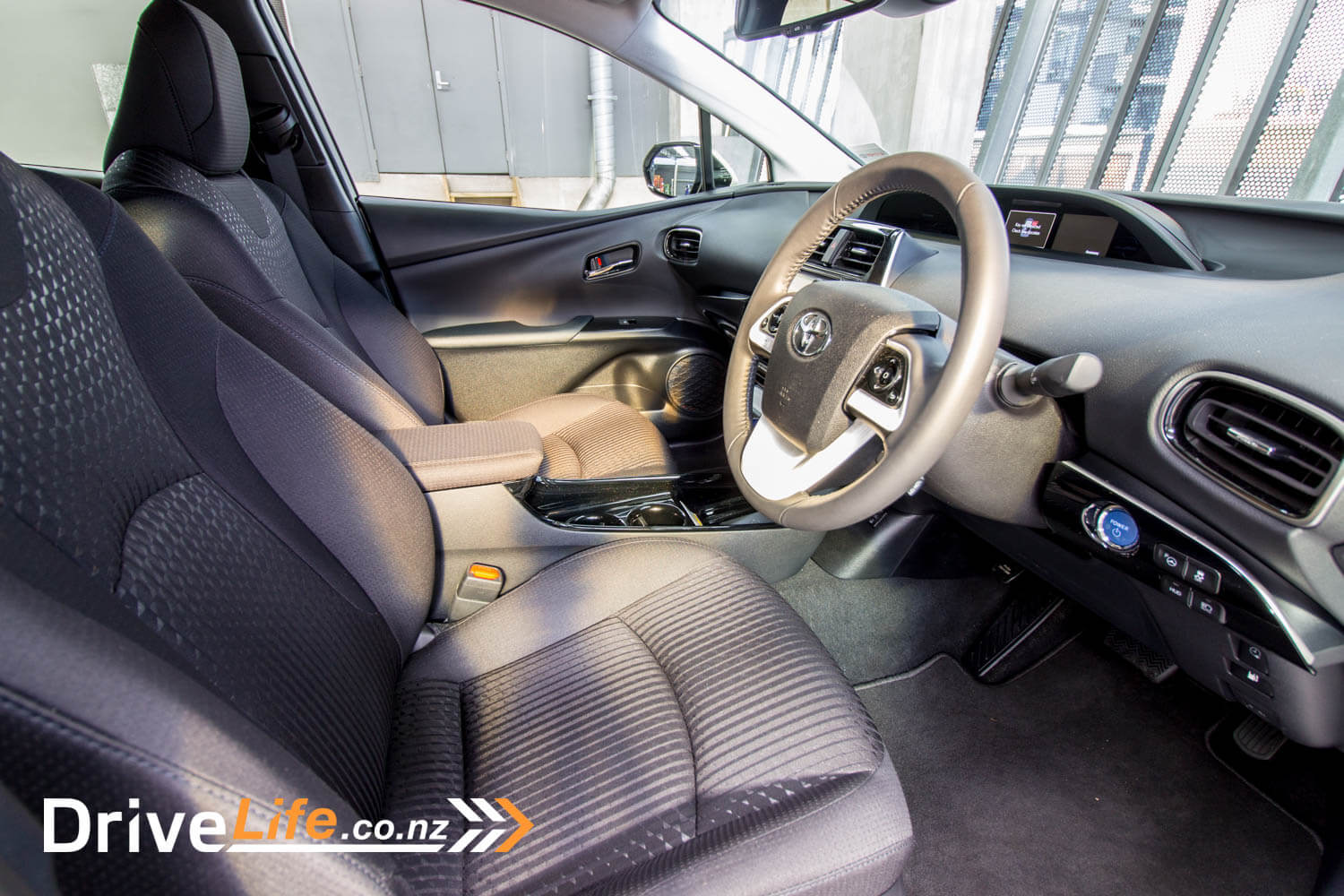
There’s auto parking on the Prime, and it works just as well as any other auto parking system. I don’t always use it, but when I do I appreciate it. They can really get you into some tight spots.
A bonus for the Prime is that it will also get you out of your parking spot again if you are challenged in that way.
Driving the car in rain on my first day with it, I went for the rear wiper – there isn’t one. I expect with the curved rear windscreen this just isn’t possible. A real shame as the rear window does seem to keep wet long after the rain is gone. Maybe something to do with the aerodynamics. It is heated of course – both the upper and lower glass – so in the mornings that’s a way to get it clear, but it does take quite a while to warm up.
The split rear window is great for visibility out the back – at times I thought the cars behind me were far too close, but it was the lower window allowing making them seem closer.
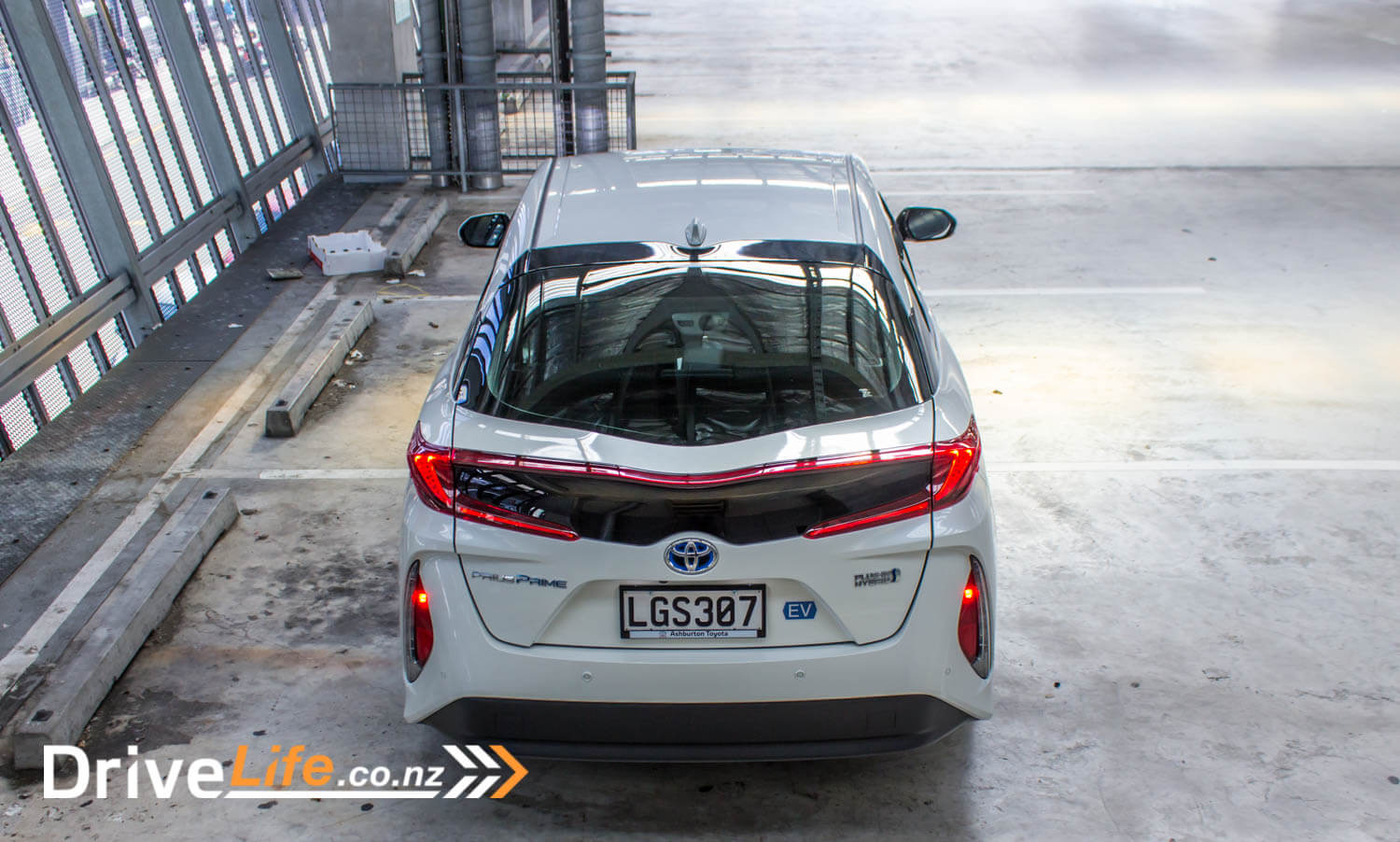
Visibility in general is very good, head checks allow you to see almost all the outside, and there’s always blind spot monitoring to help you along.
It’s been a long time since I’ve heard a JBL audio system in a car, and it was excellent overall.
There’s great separation, and high frequencies are clear and crisp. The bass was a bit lacking, but that was only in comparison to the higher frequencies.
Getting your phone to connect to Bluetooth was a breeze, as it generally is in a Toyota, and I was so happy that it reconnected quickly after getting back into the car – and remembered I had Bluetooth for audio before I turned the car off – and then went back to Bluetooth for audio. Too many cars still do not do this.
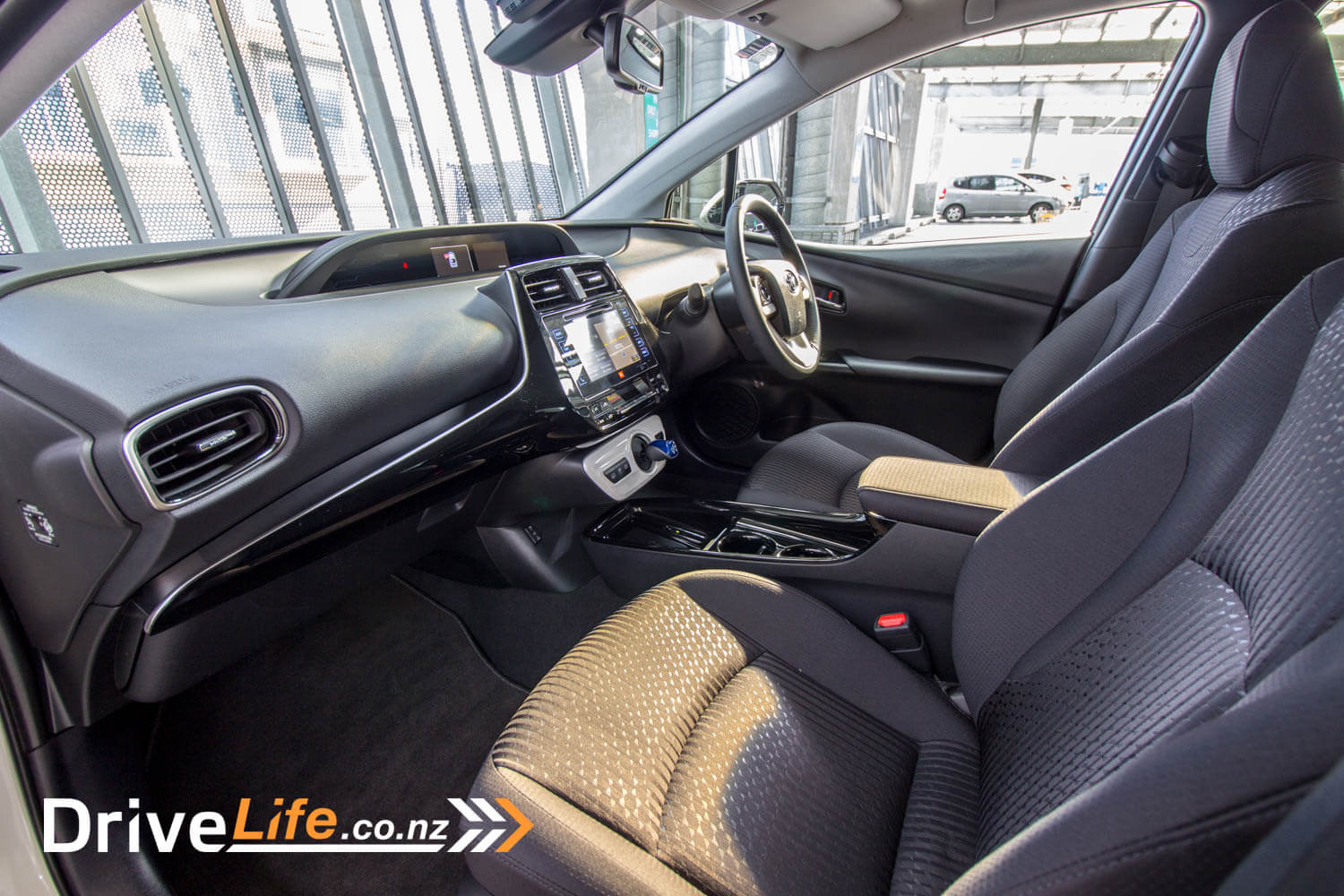
For adaptive cruise control, there’s Toyota’s normal stalk for its operation with a separate button on the steering wheel to adjust the distance between you and the car in front. We’ve mentioned lots of times how none of us like the stalk, and would prefer buttons on the wheel, so won’t go on about this again. One day, Toyota.
Adaptive cruise control can bring you to a stop, and then resume with a touch of the ‘gas’ pedal, and this makes for much easier driving. I hate to say ‘but’ again, but there’s is a but. Like the standard Prius, there’s a ‘B’ mode which gives the car extra regenerative braking – great! But adaptive cruise control doesn’t work if you have the car in ‘B’ mode, it has to be in ‘D’. I don’t understand why, but hey that’s okay. But my problem was that I had no idea why adaptive cruise would just not engage. I pushed the button on the stalk to turn it on, got a warning on the dash to say it should only be used on expressways, and then no matter how many times I pushed the stalk down to set my speed, it wouldn’t work. After a couple of days, I managed to get adaptive cruise to work as I had the car in D. A simple warning message on the dash to tell me it needed to be in D was all I needed. I couldn’t find this in the manual either.
Look, I really liked the Prime – really liked it – however there’s another ‘but’ coming up. Those who have driven any newish Subaru with adaptive cruise will know of the annoyance of those bloody beeps the Subarus make every time someone comes into your lane – or more simply, every time the Subaru speeds up or slows down under adaptive cruise, you get a beep.
The Prius Prime doesn’t beep, but every time it changes speed under adaptive cruise, a message comes up on the dash to ‘warn’ you. It’s simply not needed, and it covers up the info I want to see. Adaptive cruise control didn’t used to do this, so I’m not sure why the need to make cars tell you every time they are going to slow down or speed up. Please, just do it and leave me alone.
The Prime does have traffic sign recognition, which we at Drive Life always like – it’s a great safety feature to have in a car. I did have an issue with our test car though, where it would show the speed limit (in the form of a speed sign like you see on the road) on the central dash, and not the HUD, and at other times on the HUD and not the dash. And then, it wasn’t there all the time – it felt like the speed limit sign would only show if you exceeded the speed limit, but this wasn’t always the case. I looked for the settings for this, but there weren’t any. Really, I think this is by design, but I’d prefer to just have the current speed limit always shown and be done with it.
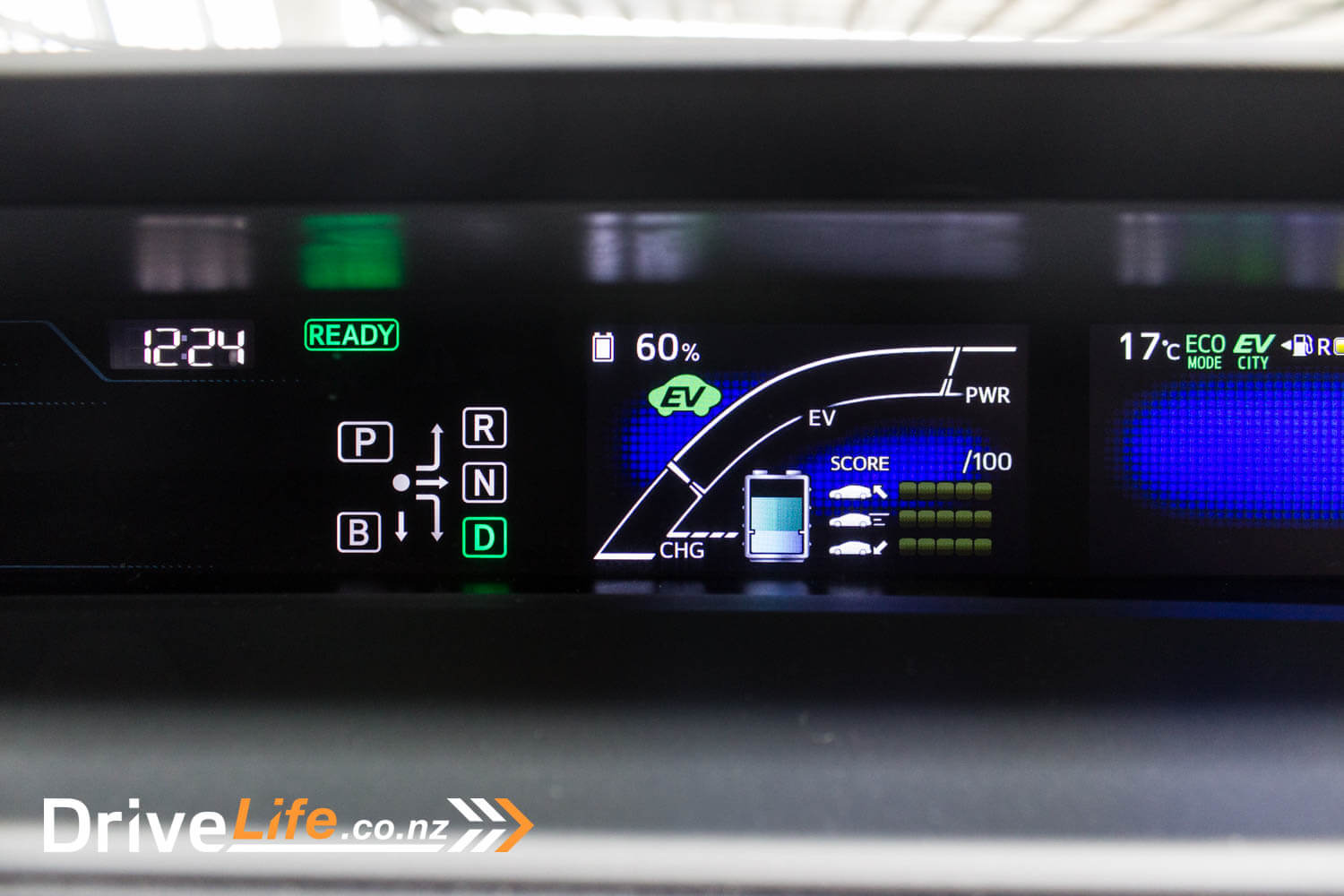
Ride is a plus in the Prime – that almost 1,600kg helps things along here. It’s a quiet ride too, with little suspension or road noise coming into the cabin. The tyres can be a bit noisy, especially on coarse chip seal, but this is often the case with the hard, low-rolling resistance tyres that manufacturers put on their hybrids/EVs.
Alright, enough of the day-to-day, let’s talk about power and petrol.
You get four different drive modes in the Prime, plus some other options. To be honest, it can get a bit confusing, but I’m sure an owner would get used to it. The four drive modes are HV, EV, EV City and Hybrid Charge.
- HV is your ‘normal’ hybrid mode, which we see in your everyday Prius. The car will start the petrol engine when it needs to, and switch it off when it doesn’t need it. The owner’s manual suggests using HV mode when going uphill or on the motorway, as these will suck the battery faster if you are using EV mode.
- EV forces the car into electric mode, as long as you have enough charge in the battery.
- EV City is EV mode but more restricted – it controls the air con more carefully, and you get a more limited power delivery. Is also minimises operation of petrol engine.
- HV Charge mode see the engine start and stay on to charge up the on-board battery.
But wait, there’s more. You can also change your car’s performance by selecting Normal, Power or Eco mode on another switch. I found I could easily drive in Eco mode all day long, and you have the insurance of knowing that using full throttle will revert to hybrid mode for power if you need it.
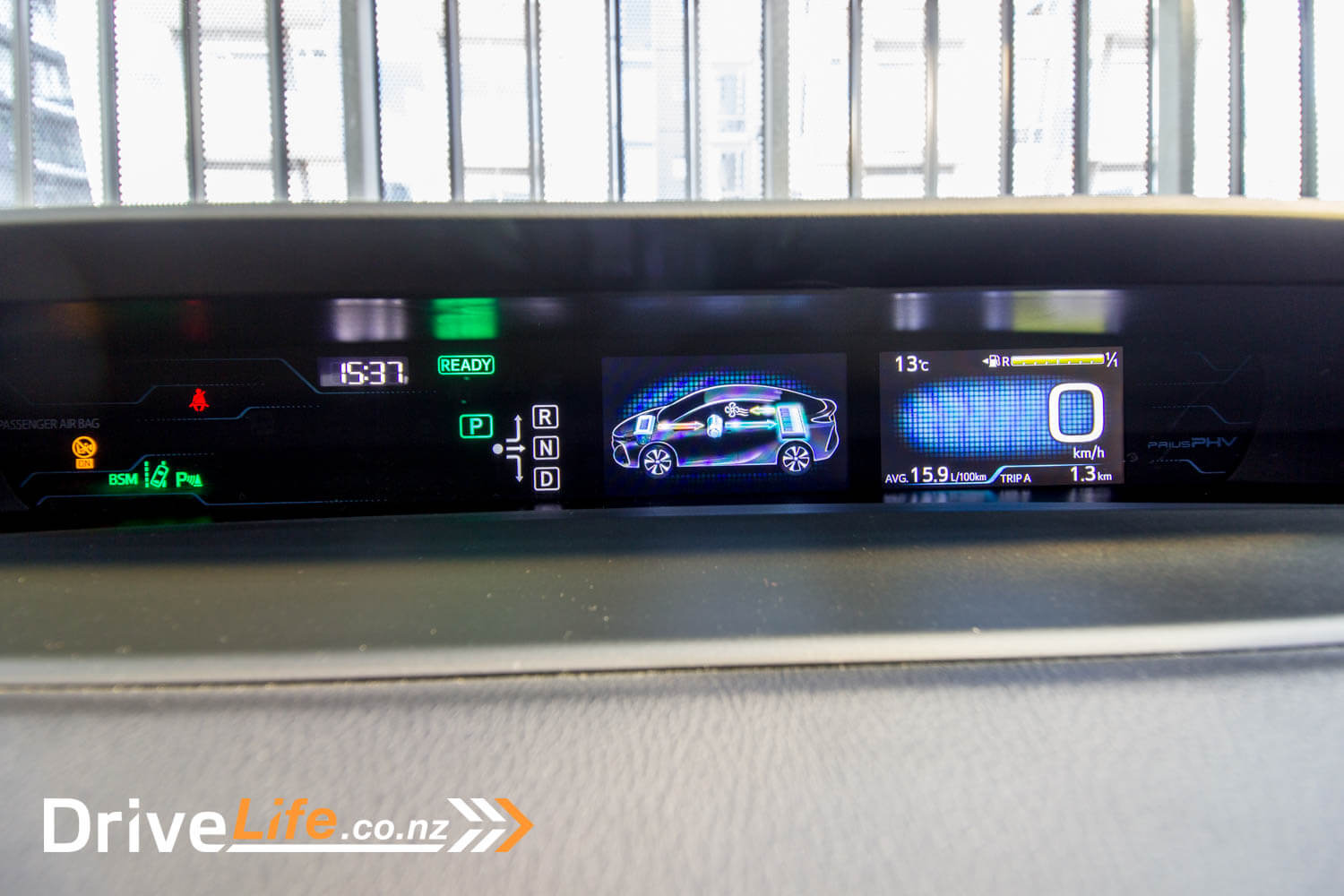
Power mode is just that – much more instant performance, but I found I didn’t need it – if I was in Eco or Normal mode, a stab of the gas pedal got me the temporary increase in performance I needed. According to the manual, Power mode is for “when crisp handling and enhanced accelerator response are required.” It does give the car a lot more push off the mark, and is a huge difference to the more leisurely standard Prius.
There’s one more feature, again similar to the standard Prius. You can select ‘B’ mode with the gear lever to give the car more regenerative braking, assisting you in charging up the battery. I’ve said this before, most recently about the VW e-Golf – I wish if you select B mode, it would stay on that mode even after you get out of the car, then back in. It gives you great braking down hills and the comfort of getting a free charge back into the batteries.
There’s a few caveats with the Prime. The petrol engine will start if you press the front window demister button. Not a biggie. As mentioned, the adaptive cruise control won’t work with the gear selector in B mode, neither will adaptive cruise work if you are in EV City mode. You are discouraged from using adaptive cruise around town.
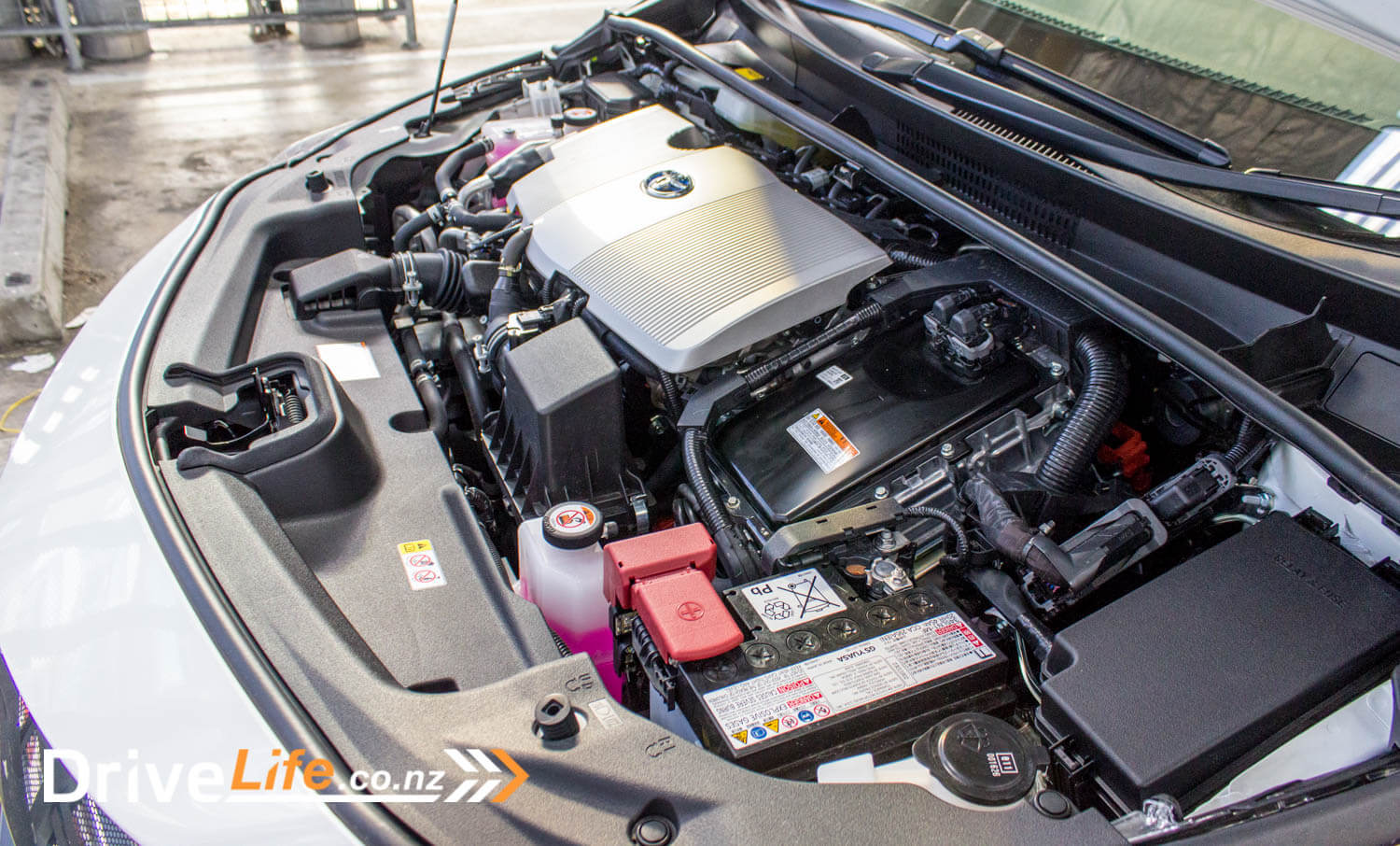
So, what’s it really like? I have to own up to some stupidity here. When I got the car home the first night, I went to plug it in as I had a 40km drive the next day, and the battery was totally flat. I saw the petrol flap on the driver’s side of the car, so went to the other side to pop the flap hiding the 240-volt charging socket.
But I couldn’t get it open. No amount of pushing on the flap would open it. I even did an RTFM and sure enough, it said push on the flap to open it. I gave up, not wanting to break it, and drove the next day in HV mode.
So in HV mode, how did it do? On a 40-minute drive covering 38km and averaging 59km/h, the Prime gave me 4.1L/100km. Sadly, my EV ratio was only 10% – I really needed to get it plugged in.
It wasn’t until the next day I got back to the Toyota dealer, who went and pulled the lever by the driver’s door to open the petrol flap. I was trying to open the wrong flap. Yeah, I felt like such an idiot. So that night, it was plugged in and charged up, ready for another 38km drive the next day.
The next day, I had a full battery – with 54km left to go. I drove in Eco mode all the way, and had 6.2km left when I got to my destination (after 38km of driving). The engine did turn on now and then, especially when I put the front window demister on, so it did use some gas – 0.4L/100km. I was pretty happy with that, and 1.0 now felt achievable.

Before I left for home, I RTFM again. I read that if I held the EV/HV button down for three seconds, the engine would start and charge my battery up – I didn’t need to plug it in. I did that, and by the time I got home, I had put 30km charge into the battery, and averaged 5.6L/100km. Ouch.
That night I charged it up fully with 240-volts, and saw the timer button to the right of the steering wheel. You can set the Prime up to only charge at certain times, to make the most of cheaper power in the early hours. One other thing I did notice – there’s a light inside the compartment where you charge the car up. The VW eGolf didn’t have this, and it was a matter of using your phone for light. It’s one of those small touches that makes a difference.
While reading the almost 800-page manual again, I see in Europe there is a solar roof option – you go to work, and the car charges up while you are parked. A shame Toyota doesn’t have plans for this option in New Zealand.
The next day, I was going to do exactly the same 38km trip. Fully charged, I left home and put the car in Power mode, instead of Eco. This time when I got to my destination, I had 6.1km left in the battery – just 0.1 of a kilometre less than in Eco mode, and fuel consumption was 0.5L/100km. Was it worth running the car in Eco mode to save just 0.1 of a litre over 38km? Your call on that one, but Power mode is a whole lot faster.
So overall, did I get it down to 1.0L/100km? No, sorry. Overall I did 464km in the Prime, and got 2.3L/100km out of it. That’s still pretty low, and that included my stuff ups of not charging it up.
Do I believe your average driver could get 1.0? Tough call, but it’s a maybe from me. If you lived in a flat city and didn’t do lots of motorway driving, then yeah, totally possible. In every other city in New Zealand, I wouldn’t think so, but still, 2.3 is a great result.
I think one of indicators is our test car – it had done almost 4,000km and the average over that time? 4.0L/100km. That’s likely because it’s been gone through by a lot of motoring journalists, and may or may not have fuel economy on their minds.
Then again, after driving 464km, I still had 648km in the 43-litre petrol tank. Not quite the almost-incredible 2,400km, but I was happy with that result.
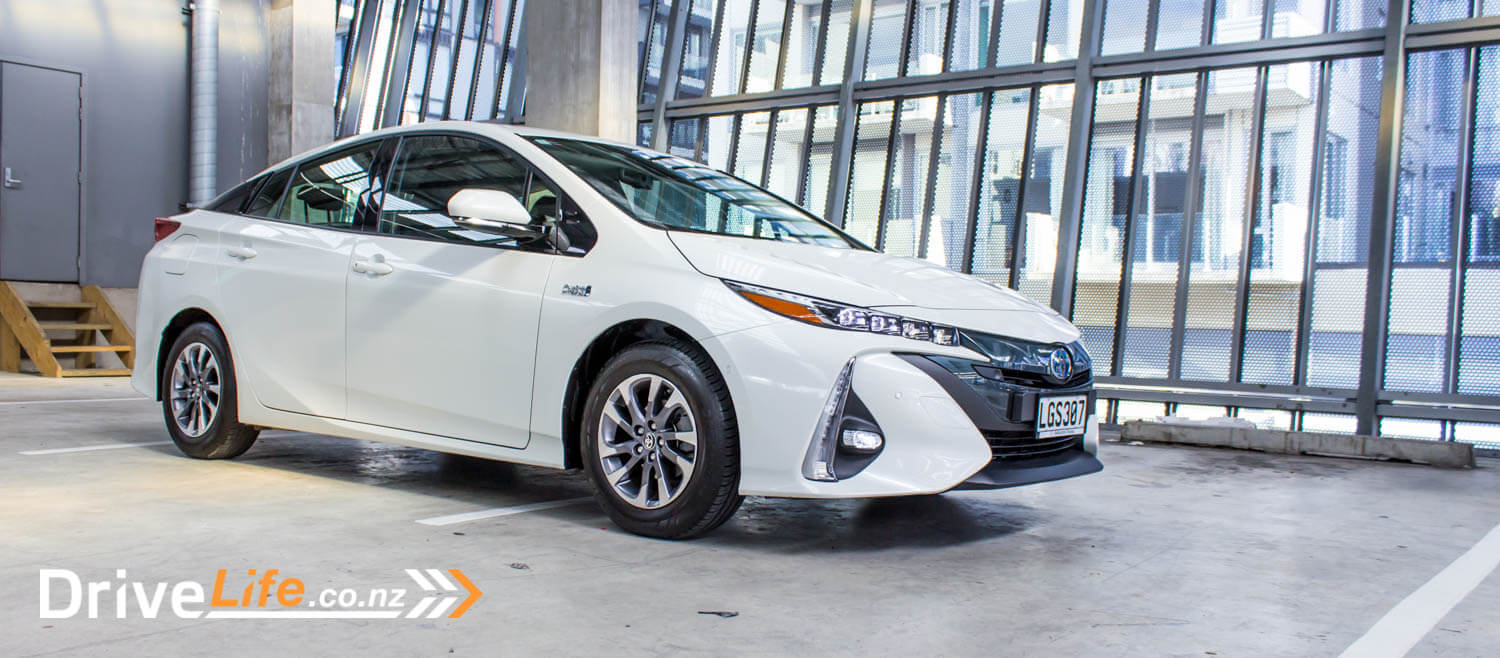
What’s The Competition For The 2018 Toyota Prius Prime?
| Brand/Model | Power/ Torque |
Est. range, battery only, km |
Battery capacity, kWh |
Seats | Boot space, litres |
Price |
| MINI Countryman Cooper SR ALL4 PHEV | 110kW/220Nm | 40 | 5.7 | 5 | 405 | $59,990 |
| Hyundai Ioniq Entry Plug-In | 77kW/170Nm | 63 | 5 | 341 | $53,990 | |
| Kia Niro PHEV | 104kW/147Nm | 55 | 8.9 | 5 | 324 | $49,990 |
| Toyota Prius Prime | 90kW/142Nm | 56 | 8.8 | 4 | 302 | $48,490 |
What’s The Pros And Cons For The 2018 Toyota Prius Prime?
| Pros | Cons |
|
|
What Do We Think Of The 2018 Toyota Prius Prime?
I loved the VW eGolf, but I know others would see the 220km range and shudder – even though (apparently) the average distance a New Zealand car travels each day is 27km.
So does the Prime fill a market need? Does it fit for those people with range anxiety? Could the Prime fill the void, as a stepping stone to a full EV?
1000%, yes. It feels like the perfect answer. Like the Mitsubishi Outlander PHEV, drive until you run out of battery, then either plug it in or use the engine to charge it up.
If we do truly only do 27km a day, the Prime is going to fit the needs of most of the population, and give them the ability to drive a lot further if they wanted to, without freaking out.

2018 Toyota Prius Prime rating: 4.5 Chevrons
2018 Toyota Prius Prime – Specifications
| Vehicle Type | 5-door small FWD hatchback |
| Starting Price | $48,490 |
| Price as Tested | $48,490 |
| Engine | Hybrid/electric, driving front wheels only Petrol engine 1.8-litre, 4-cylinder |
| Power, Torque | Petrol engine: 72kw, 142Nm Combined rating: 90kW |
| 0-100km/h, seconds | 11.1 |
| Spare Wheel | Tyre repair kit |
| Kerb Weight, Kg | 1,550 |
| Length x Width x Height, mm | 4645x1760x1470 |
| Cargo Capacity, litres | 360 (seats down not stated) |
| Battery capacity, kWh |
8.8 |
| Fuel Economy, L/100km |
Advertised Spec – combined – 1.0L/100km Real World Test – combined – 2.3L/100km Low Usage: 0-6 / Medium Usage 6-12 / High Usage 12+ |
| Fuel tank capacity, litres | 43 |
| Towing Capacity Kg, unbraked/braked |
Not rated |
| Turning circle, metres | 10.2 Small: 6-10m / Medium 10-12m / Large 12m+ |
| Warranty | 3-years, 100,000km Batteries: 8-years, 160,000km |
| ANCAP Safety Ratings | 5 Star |
